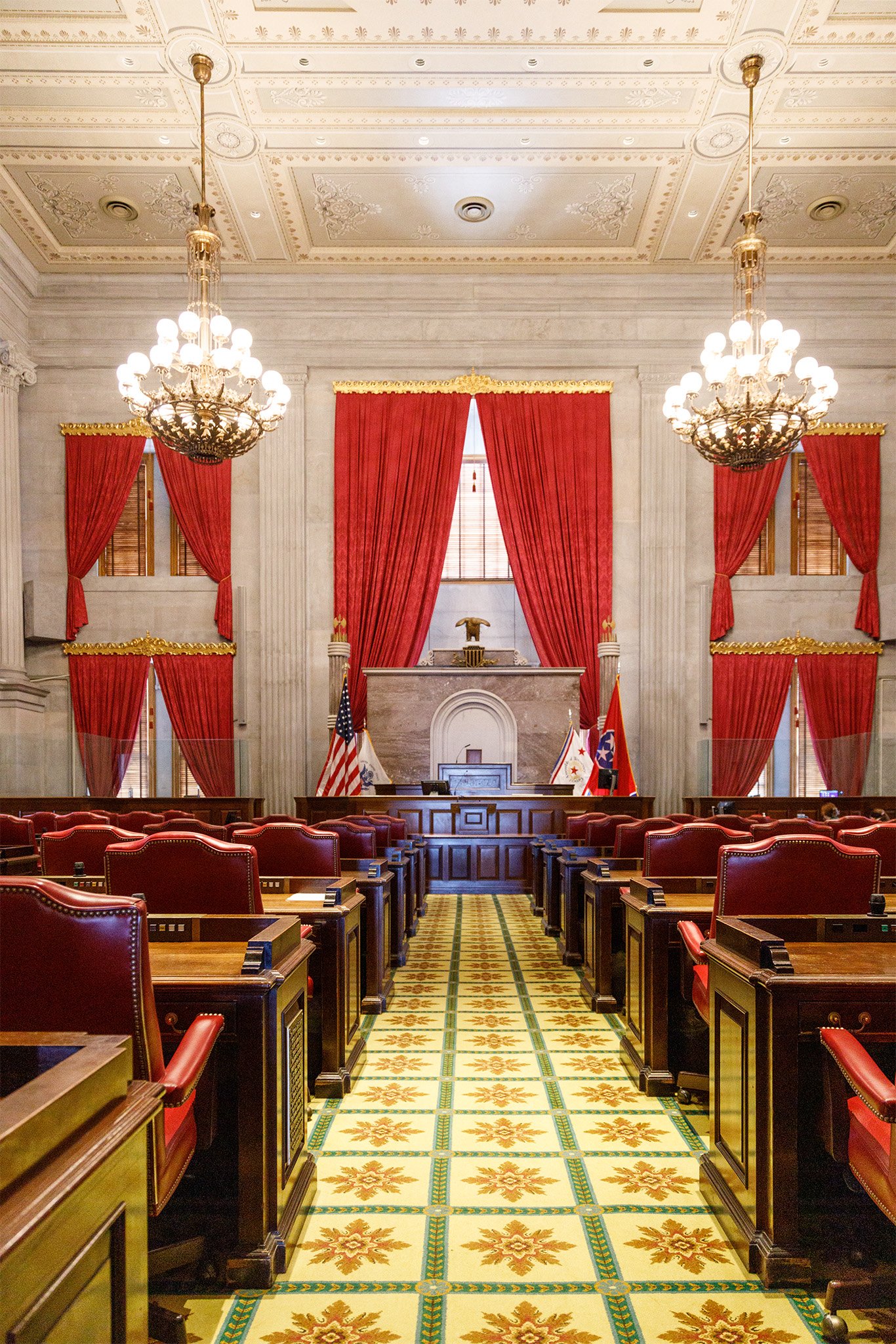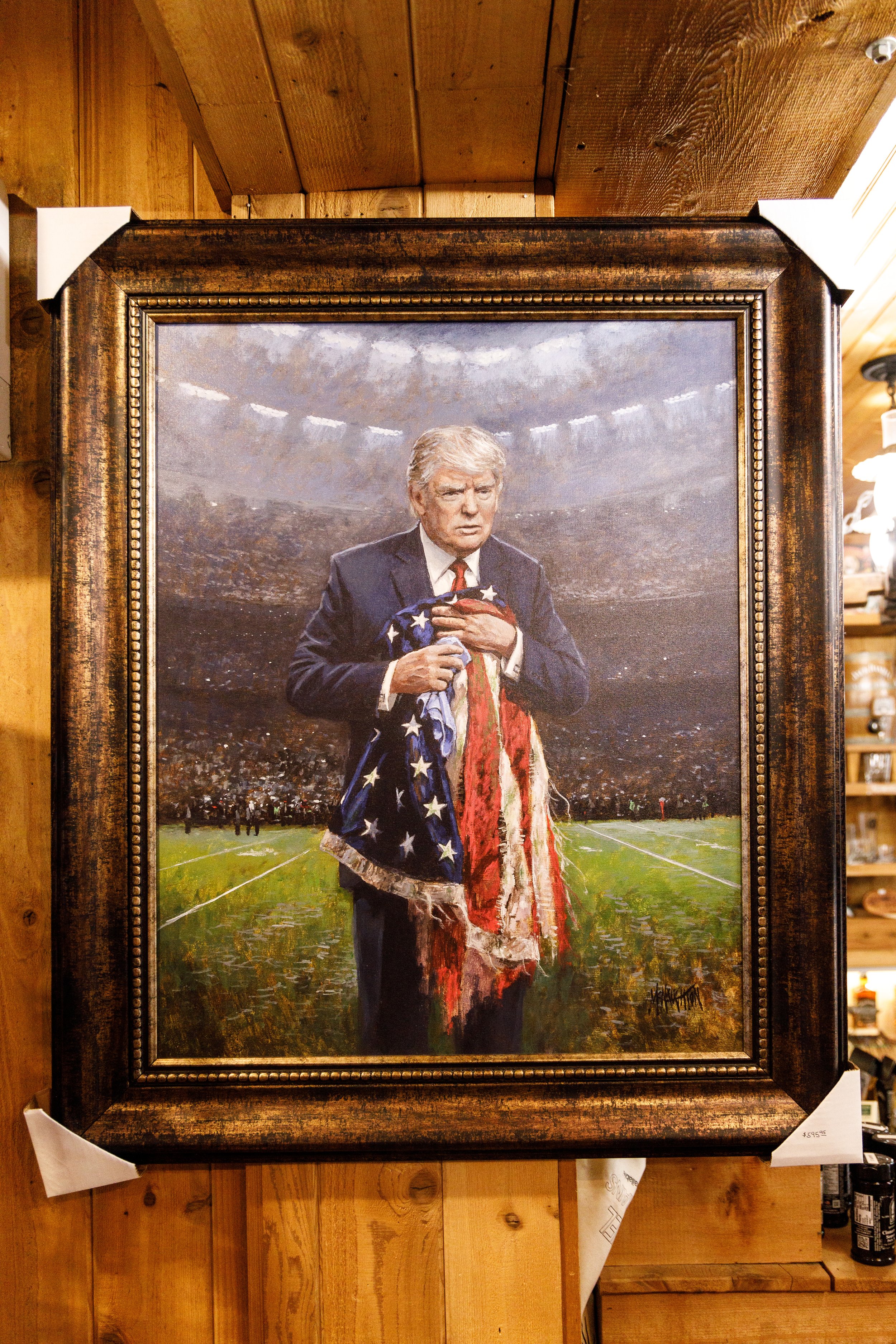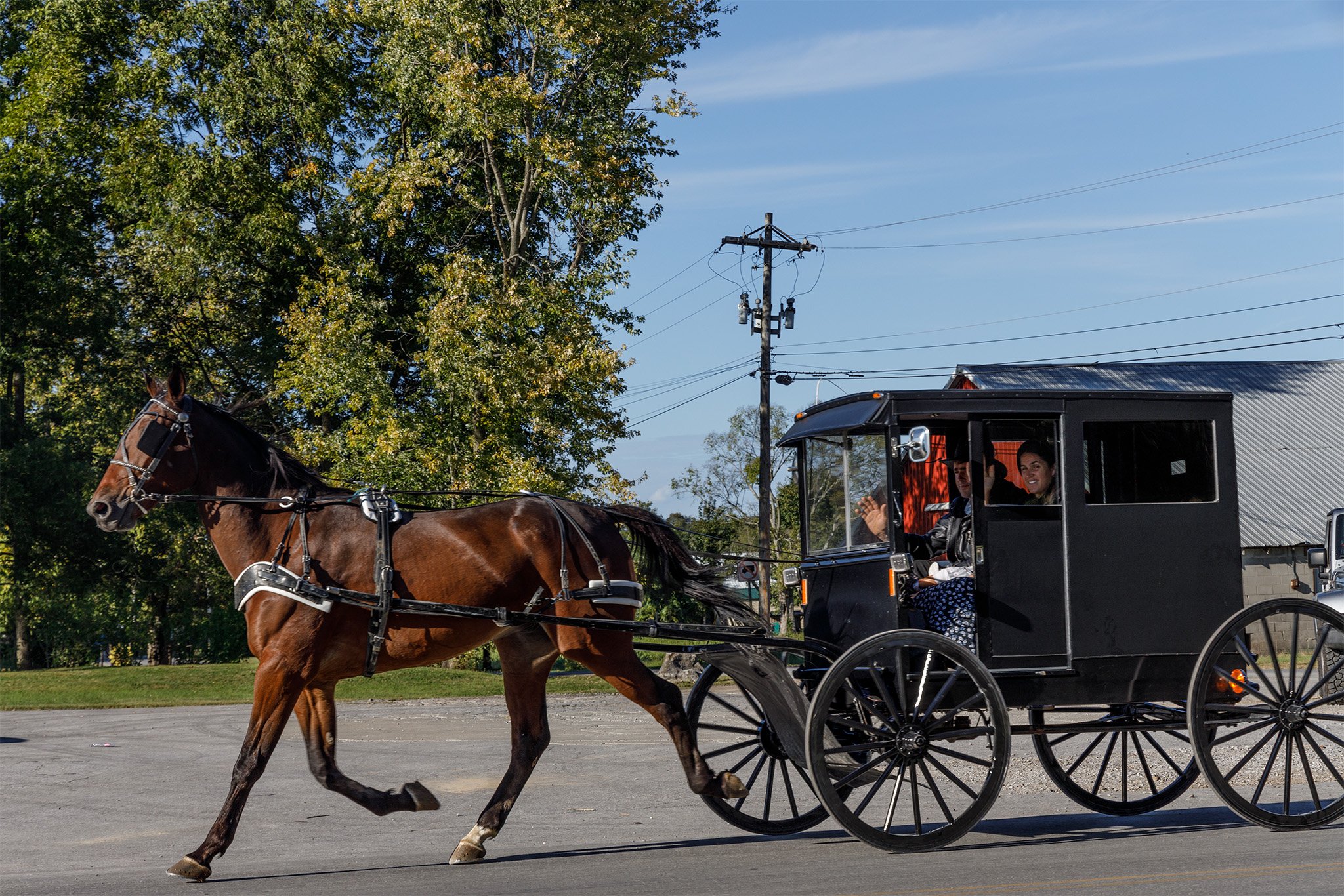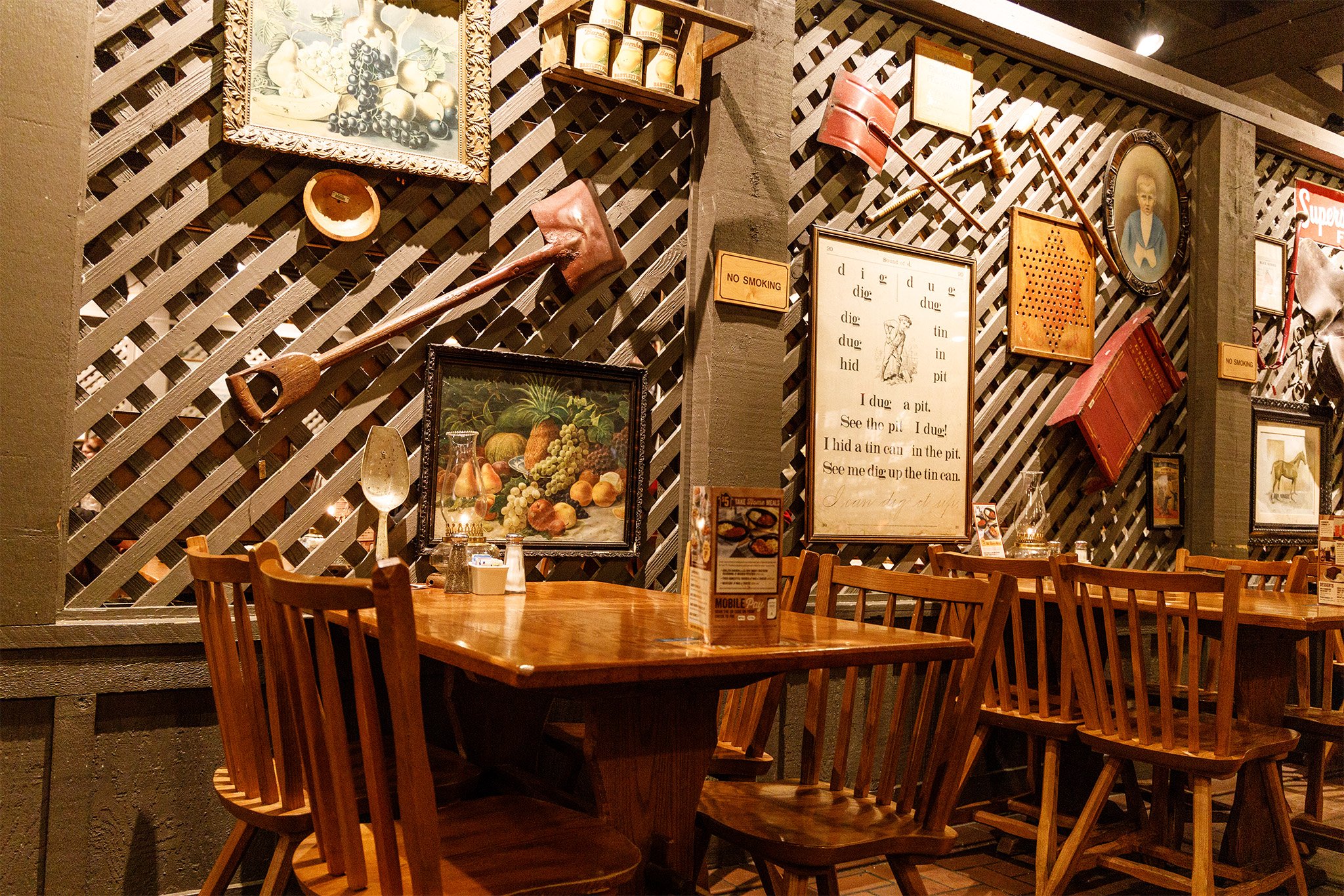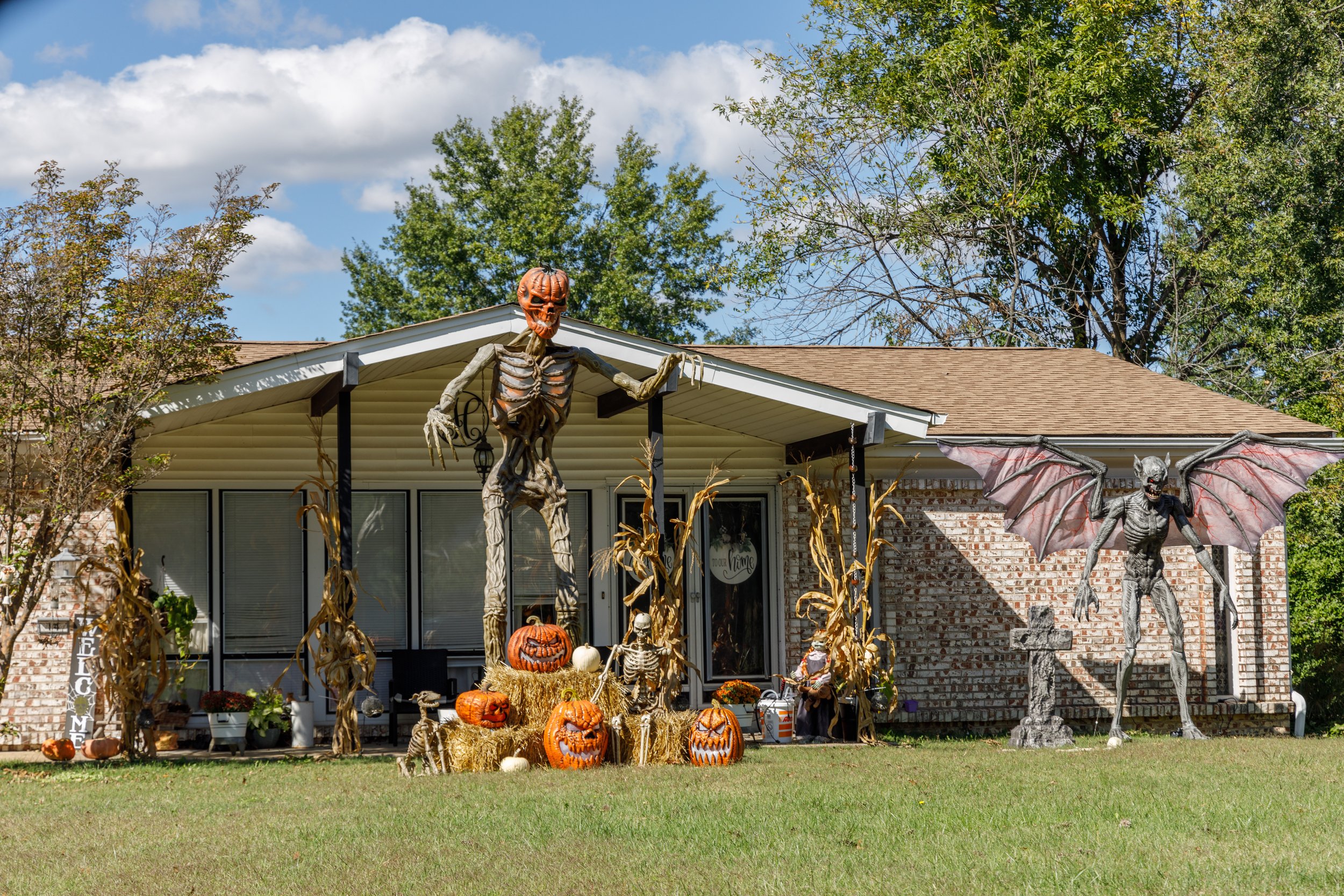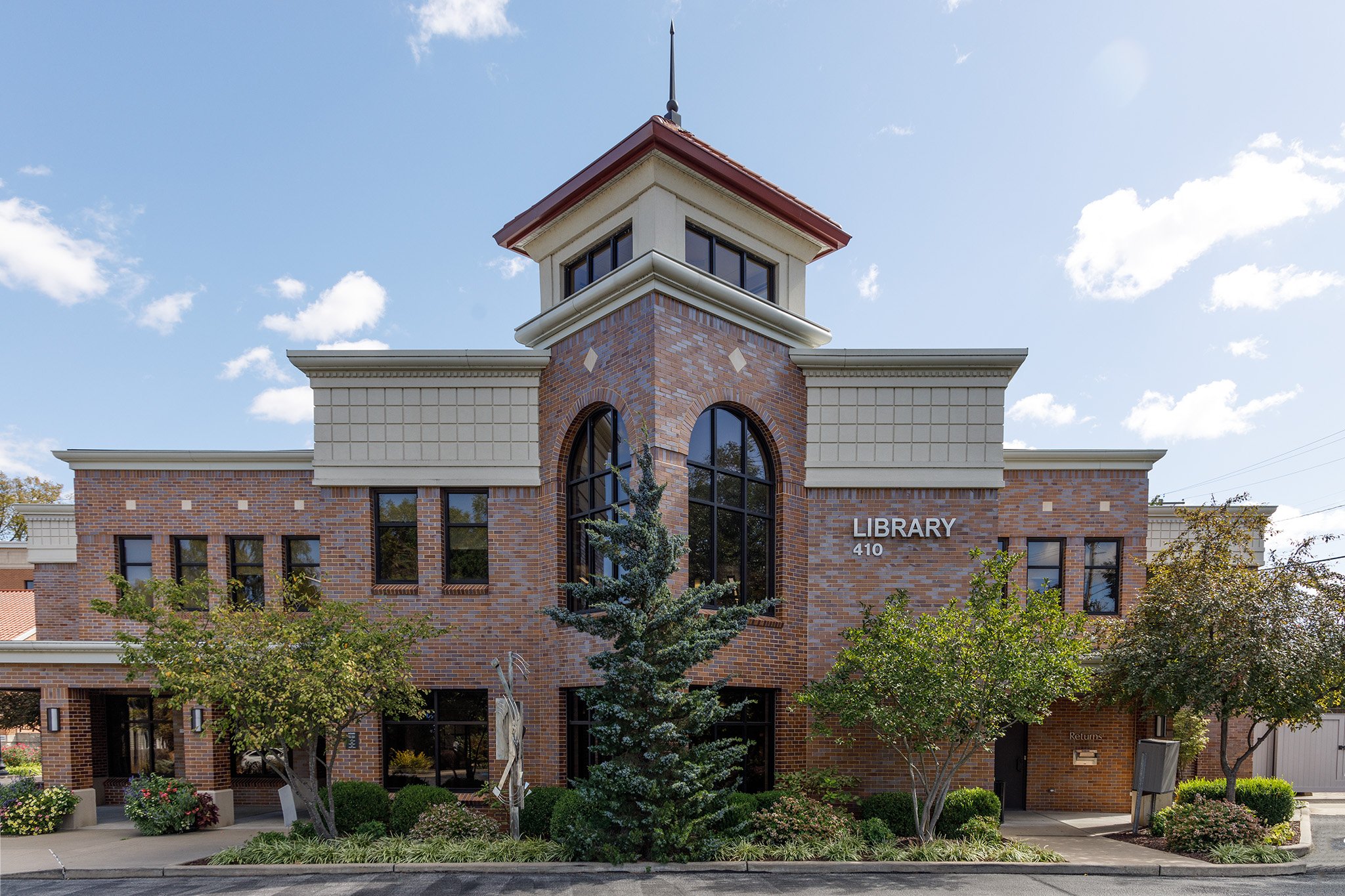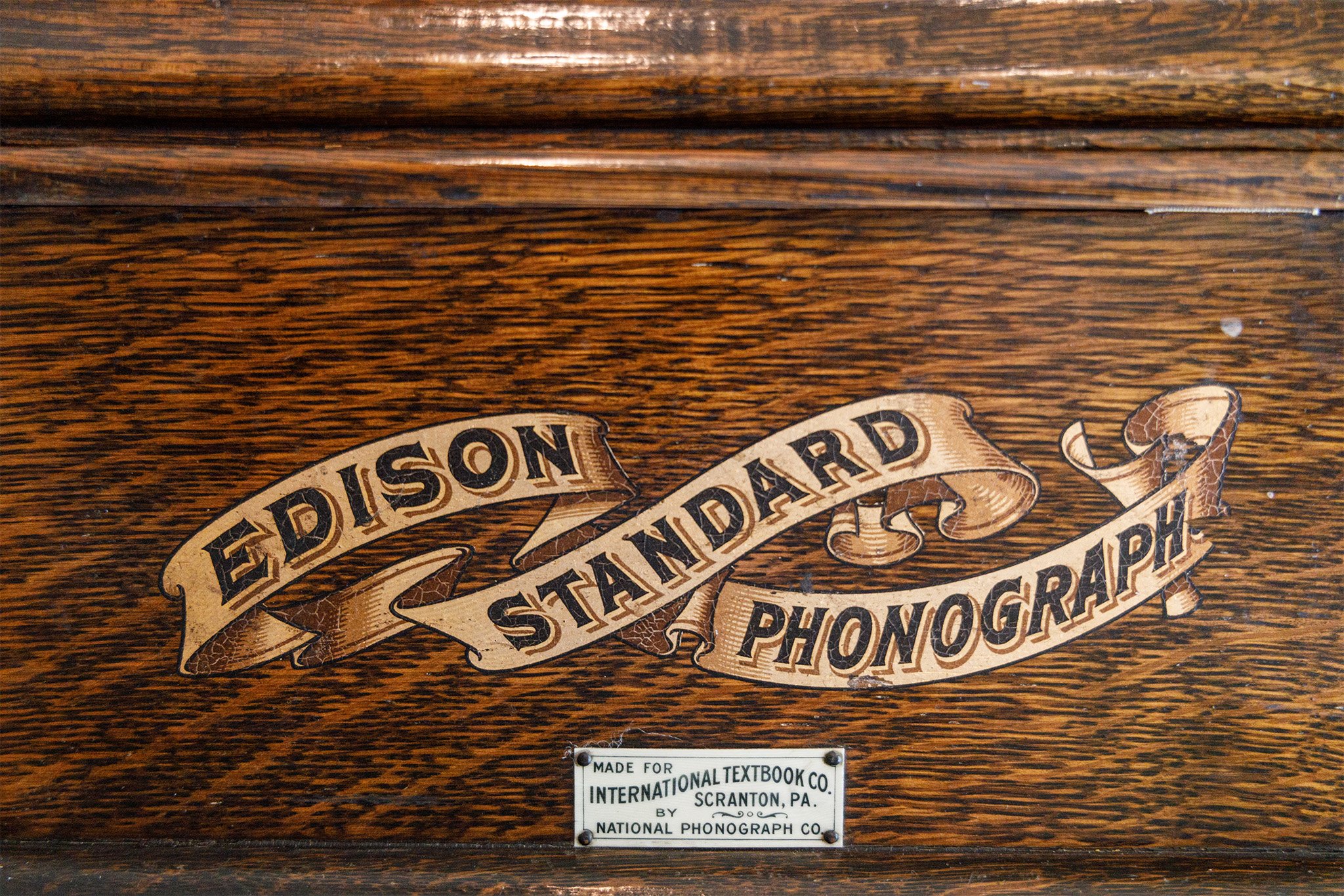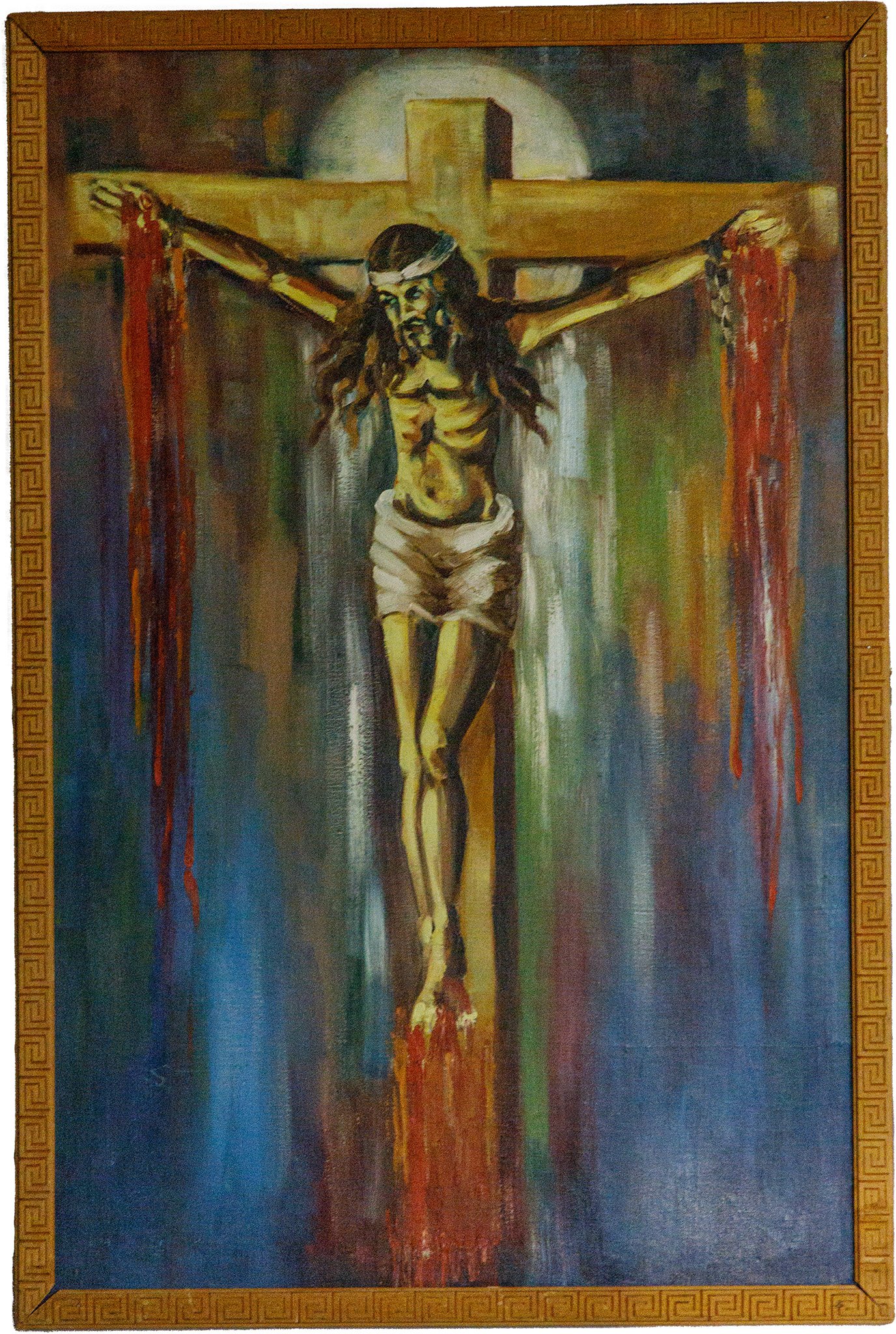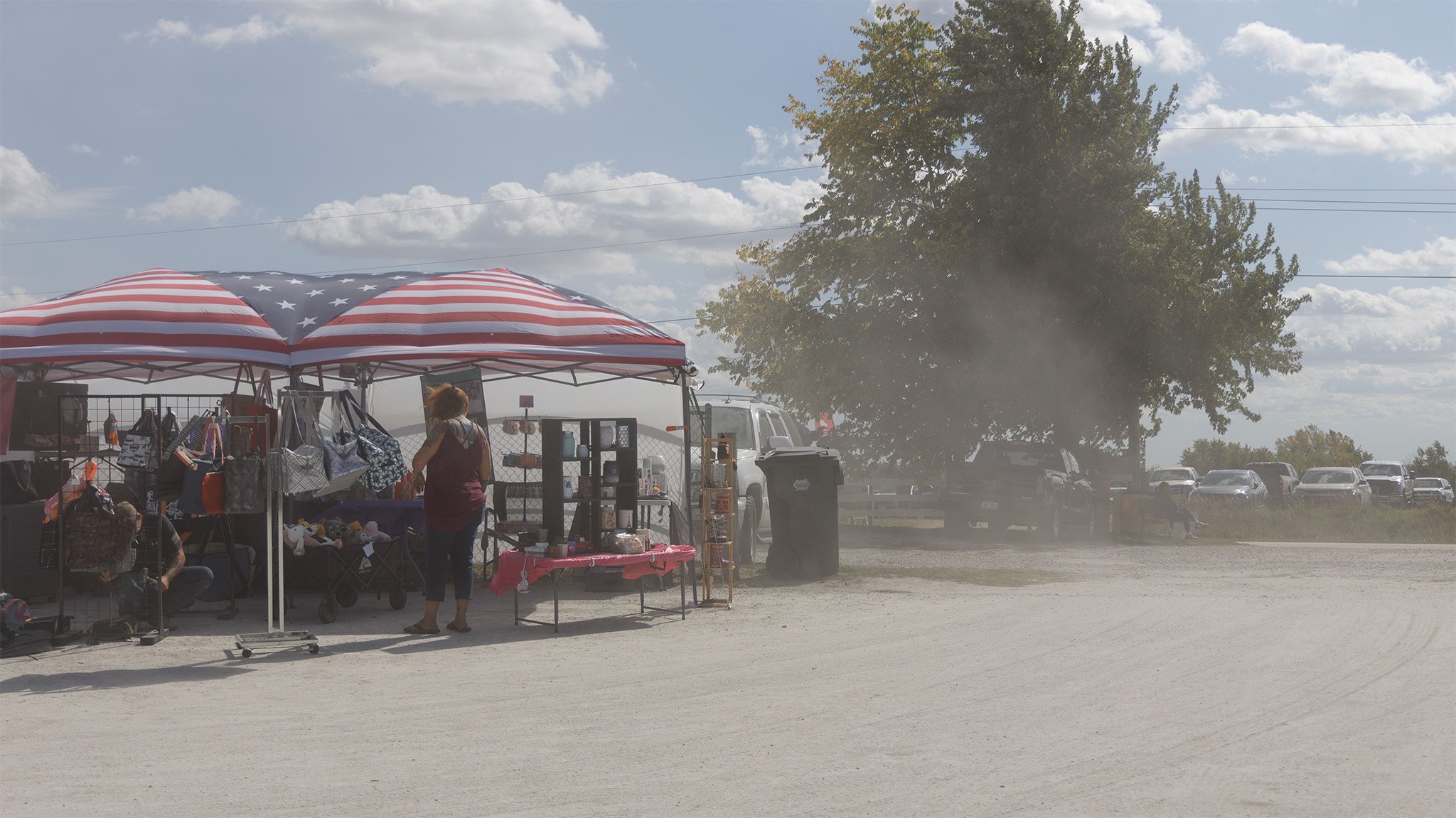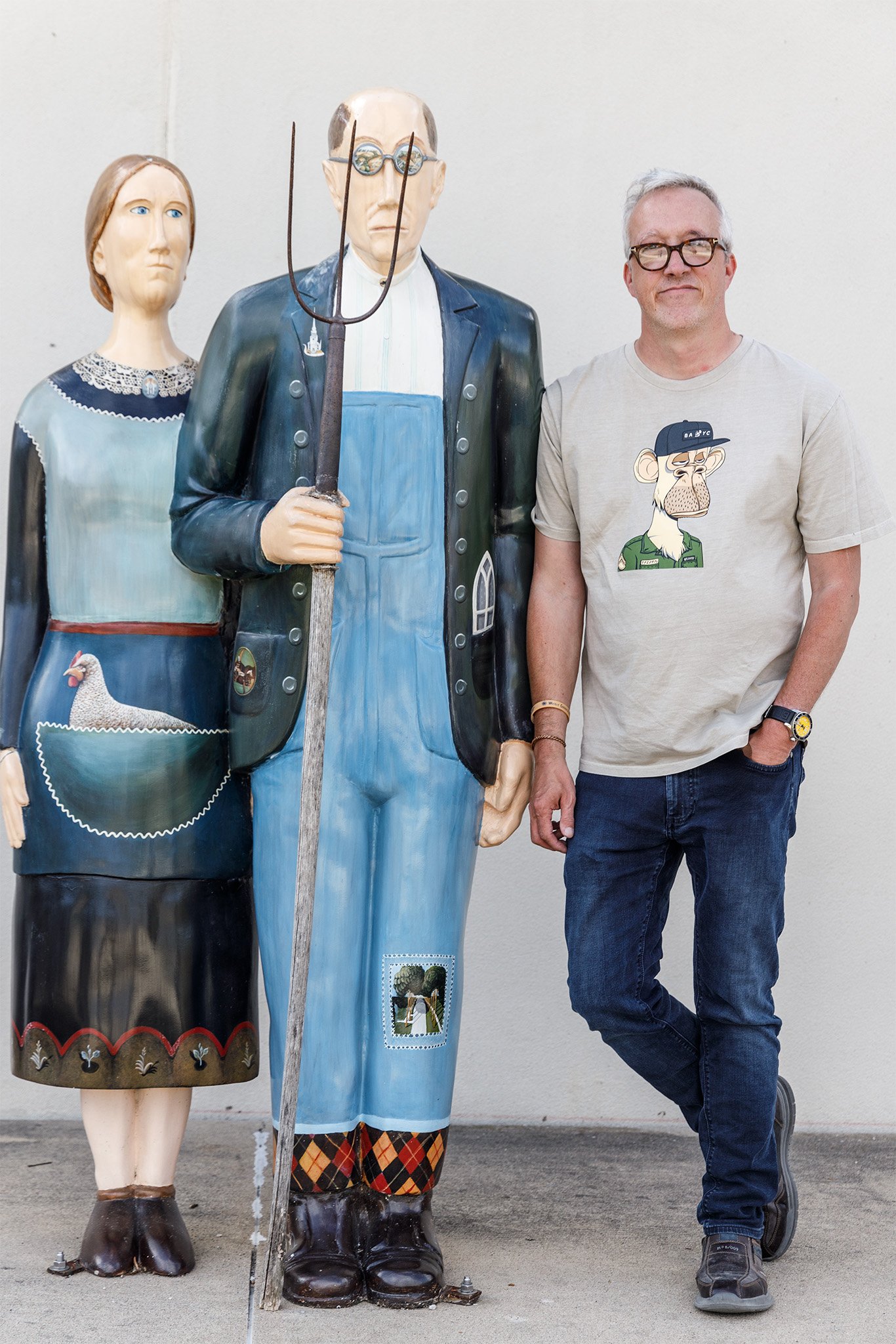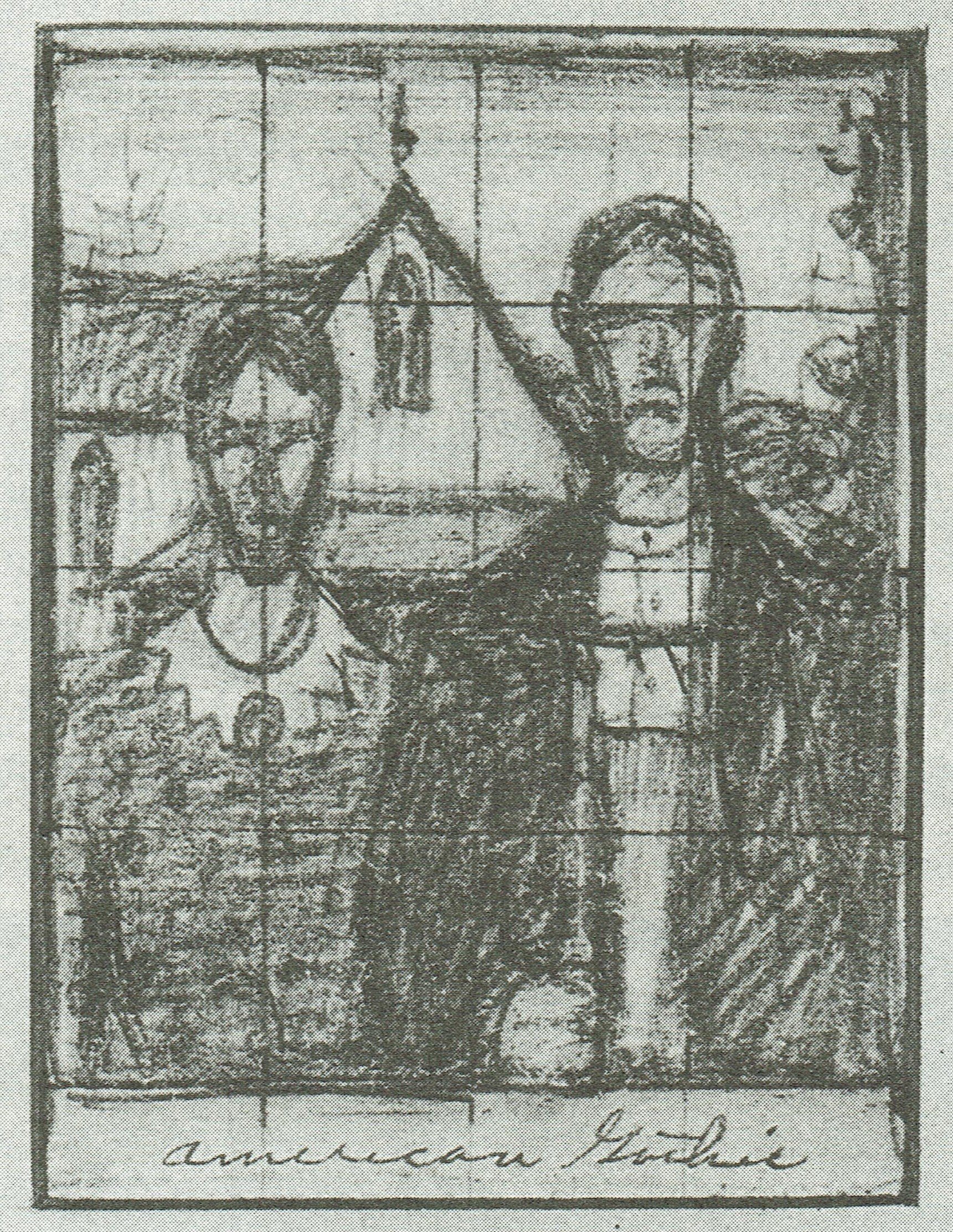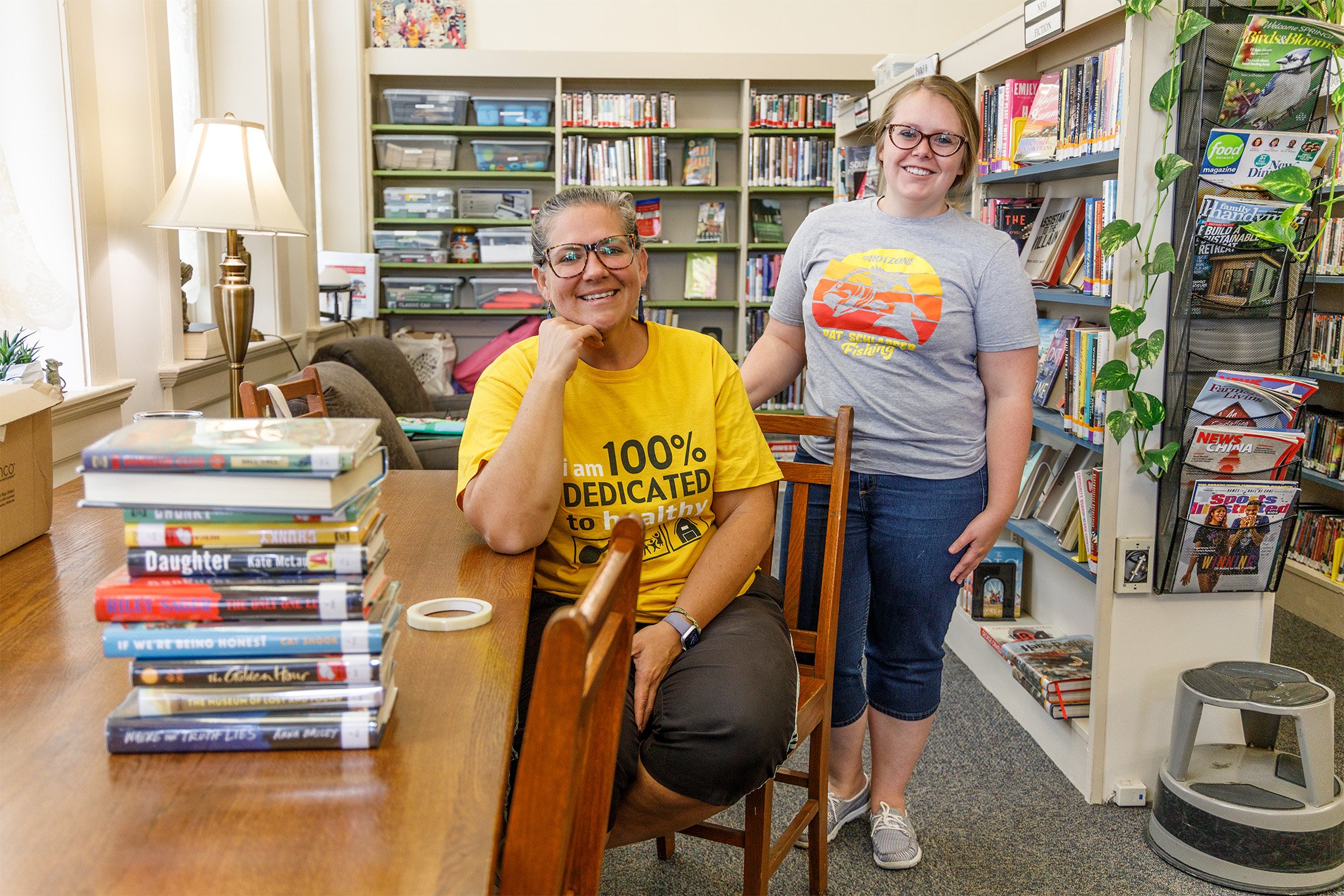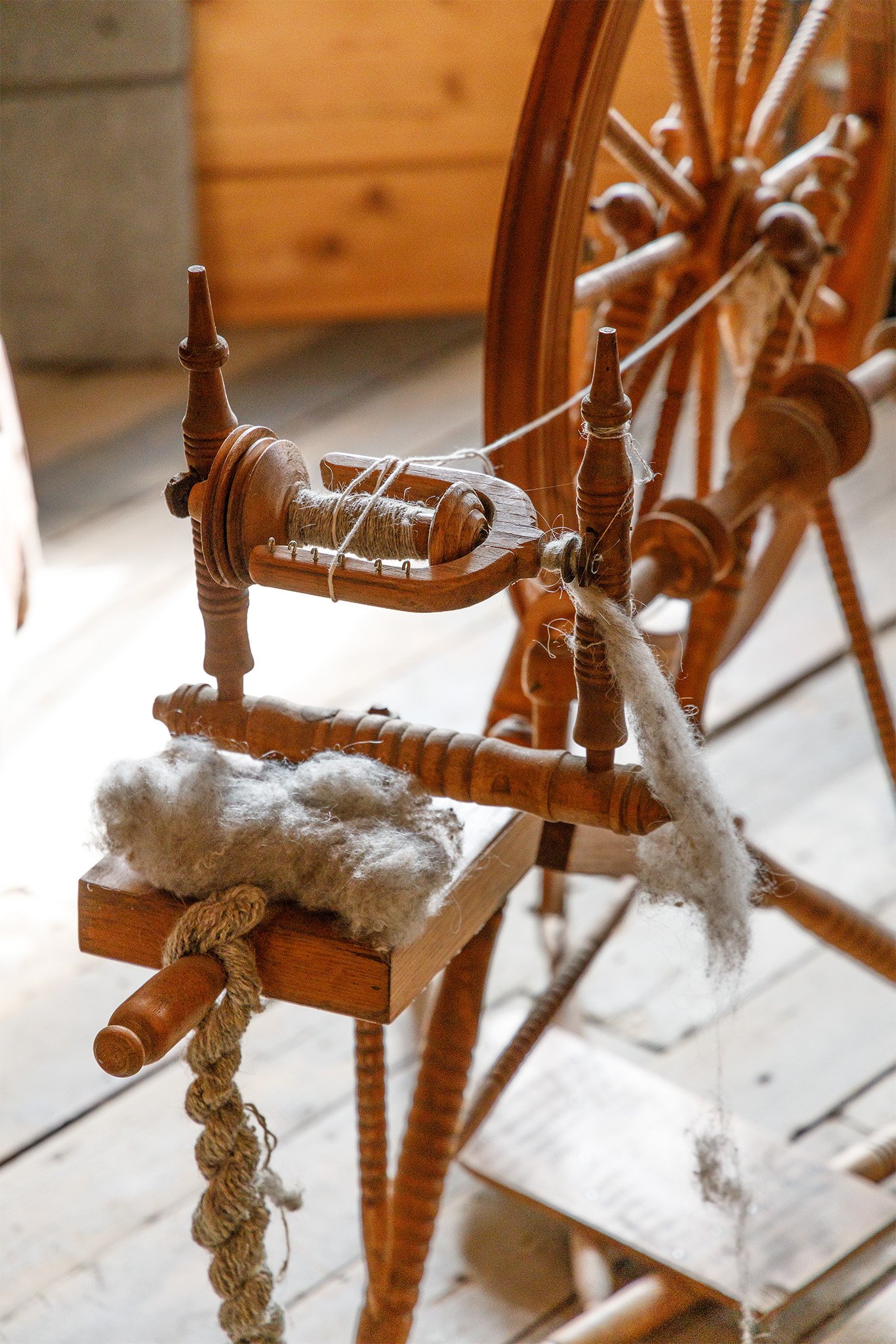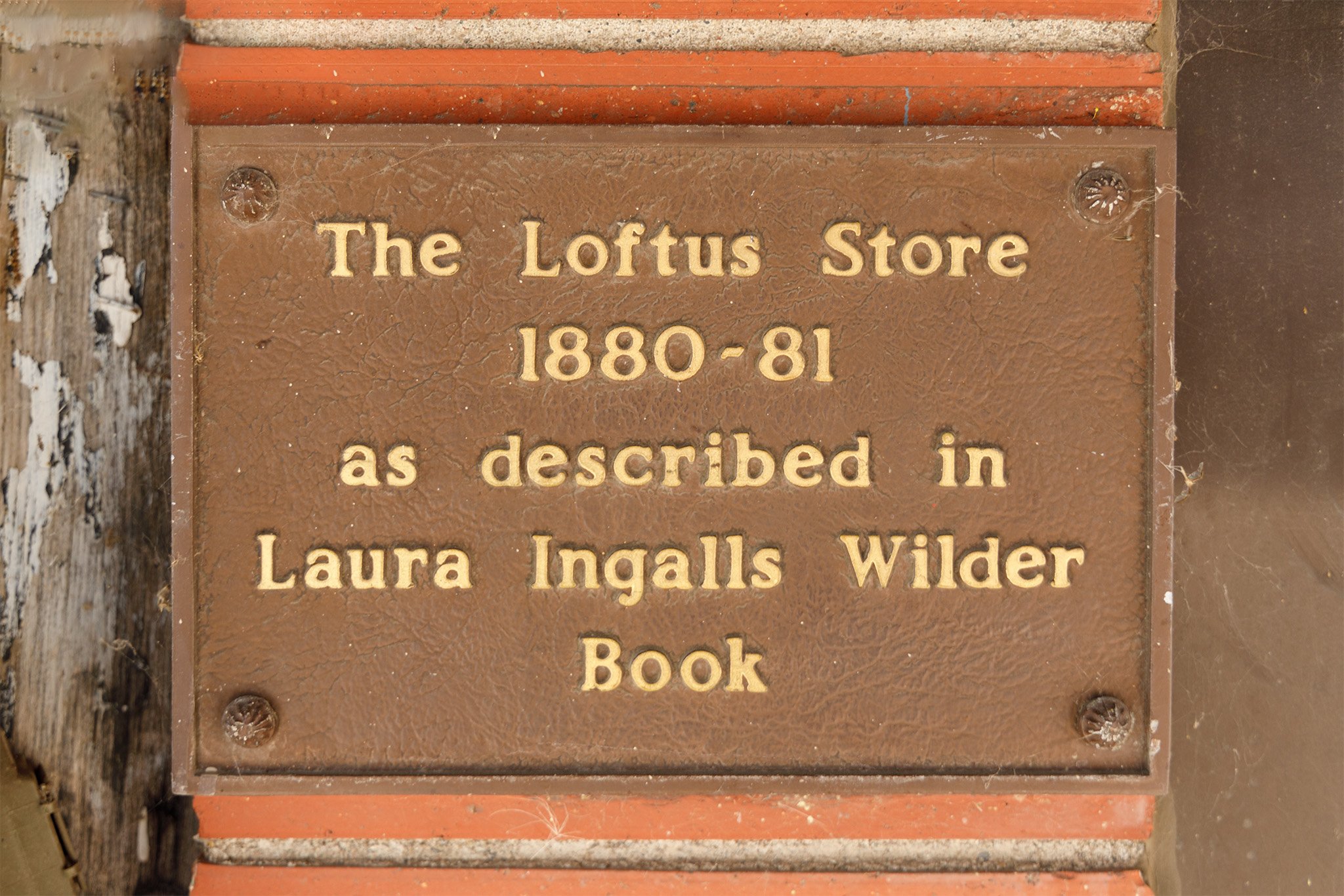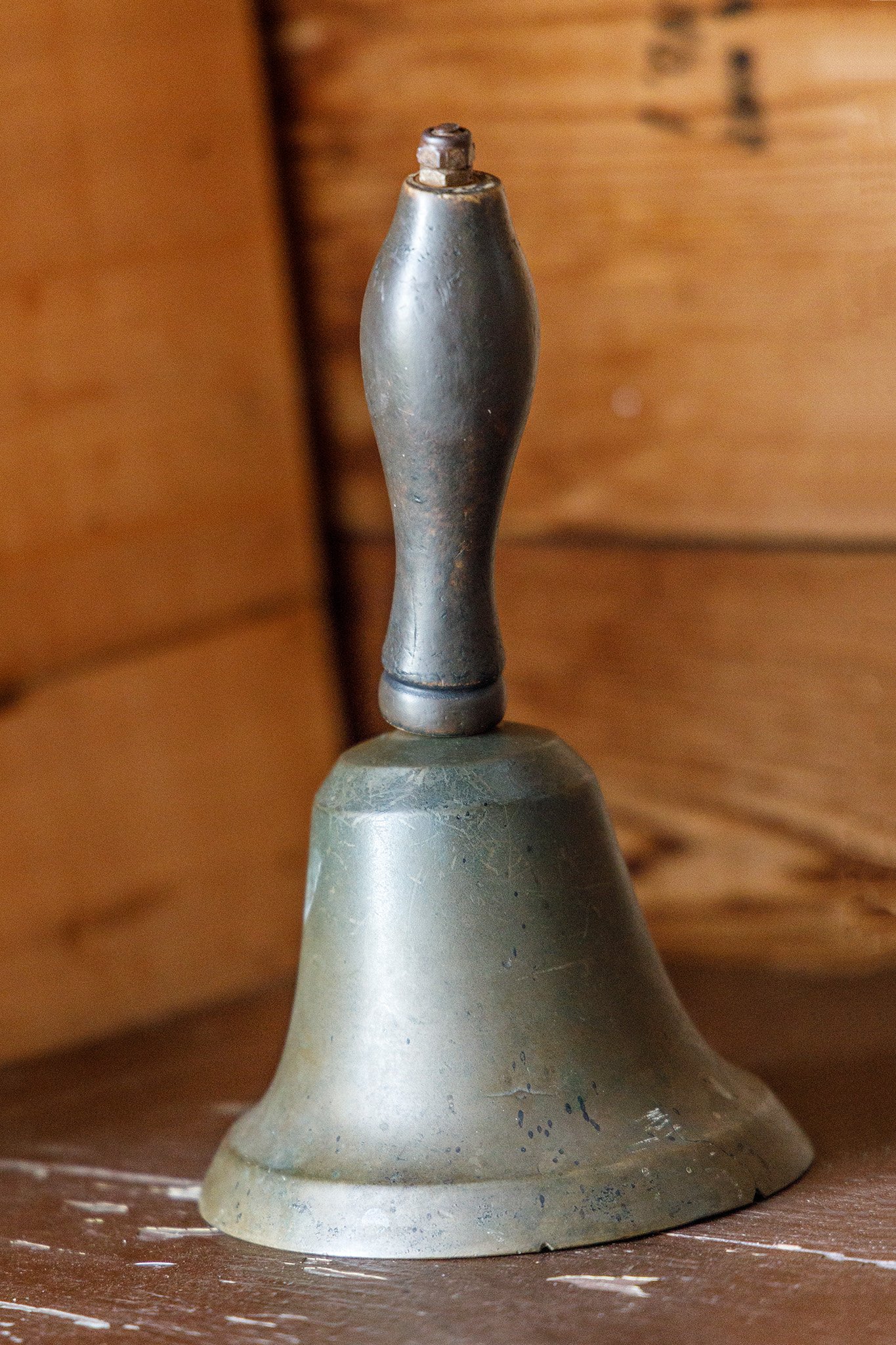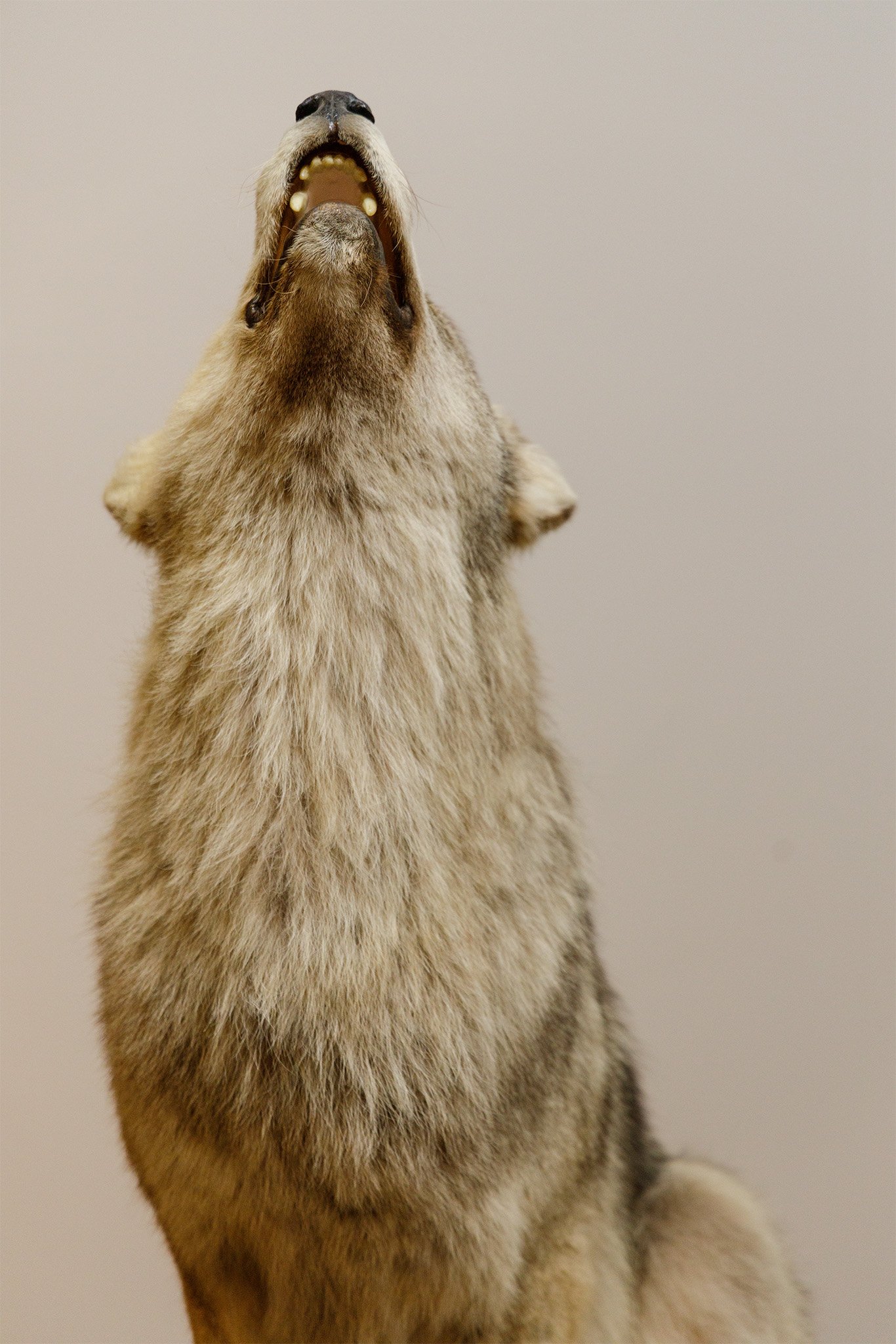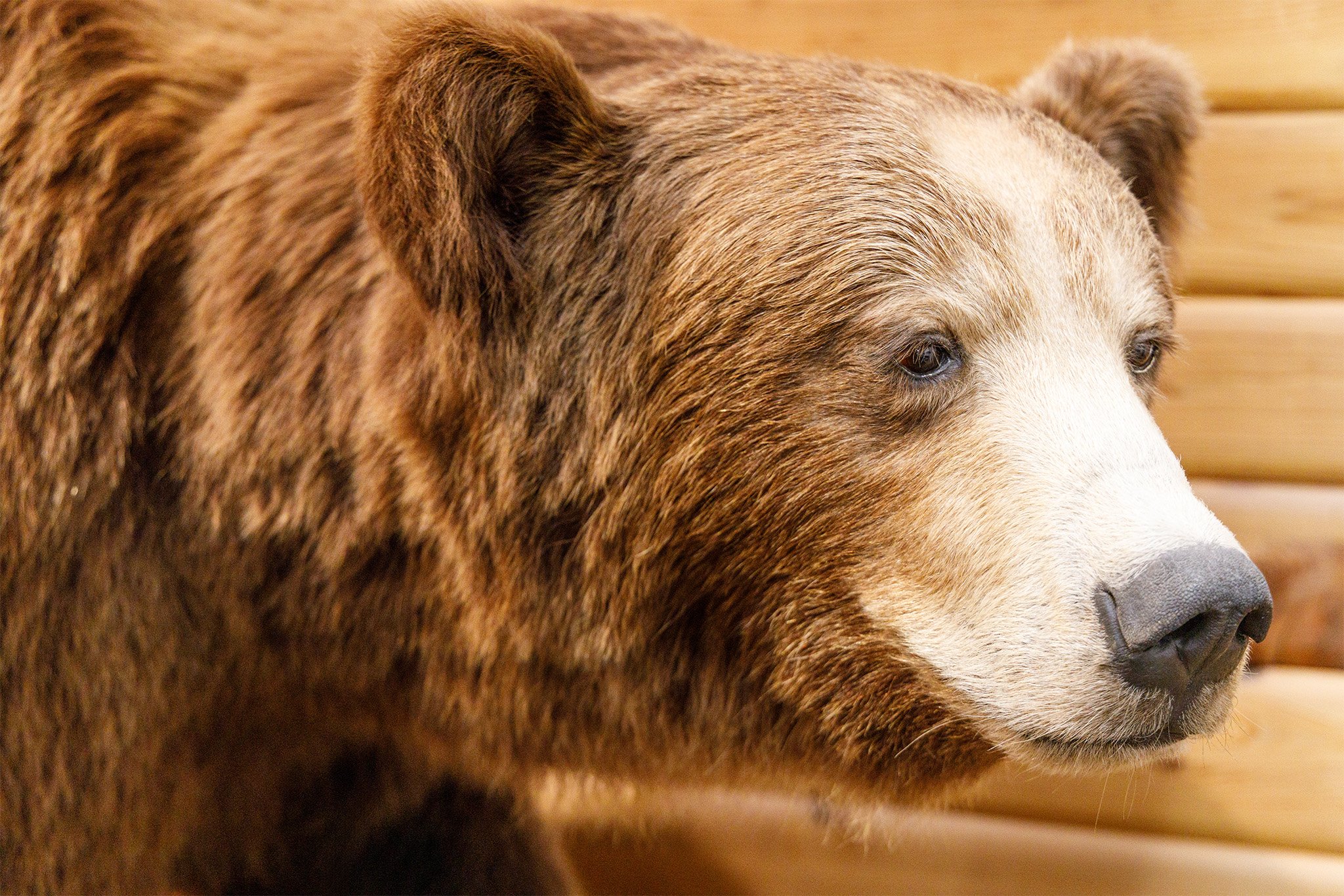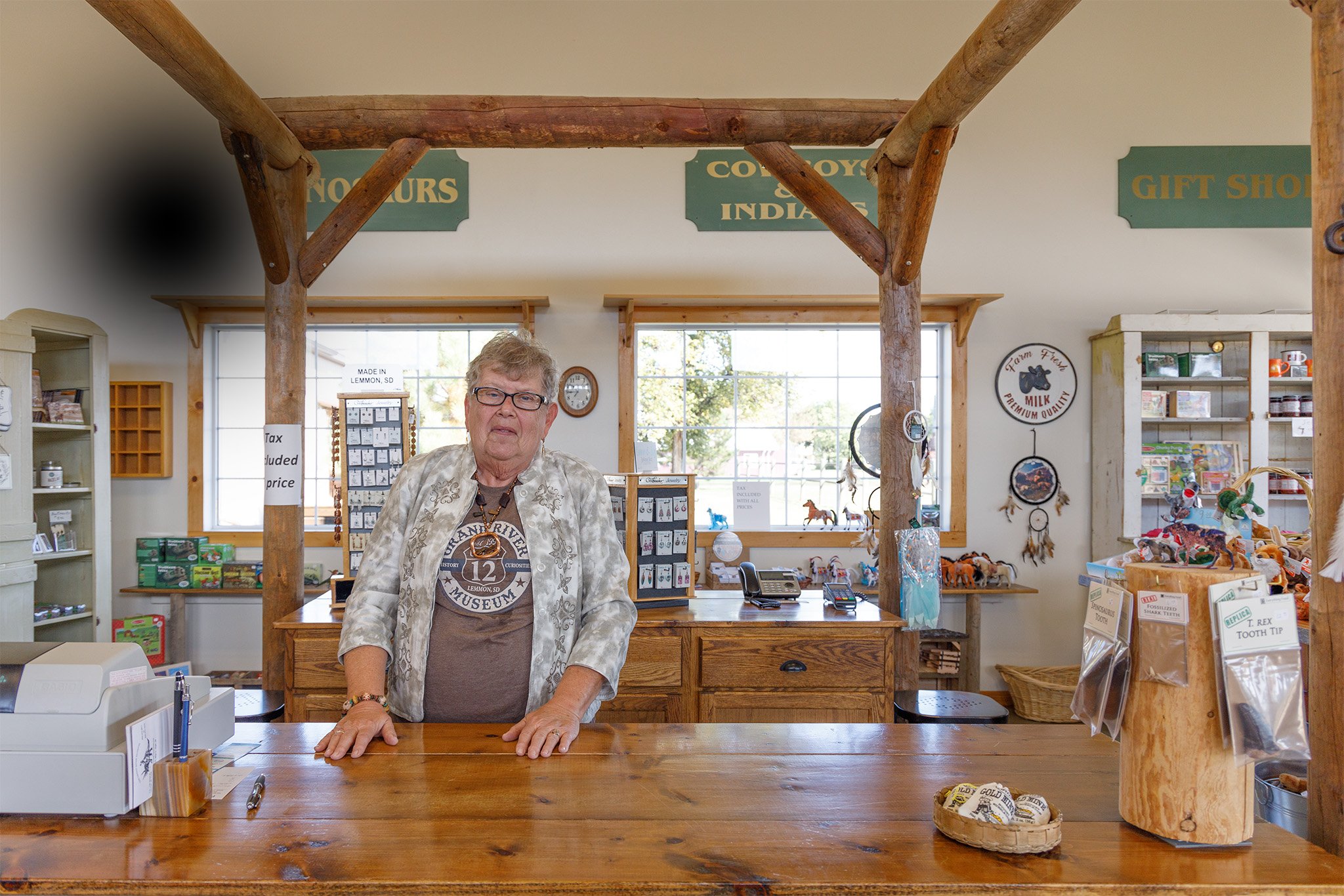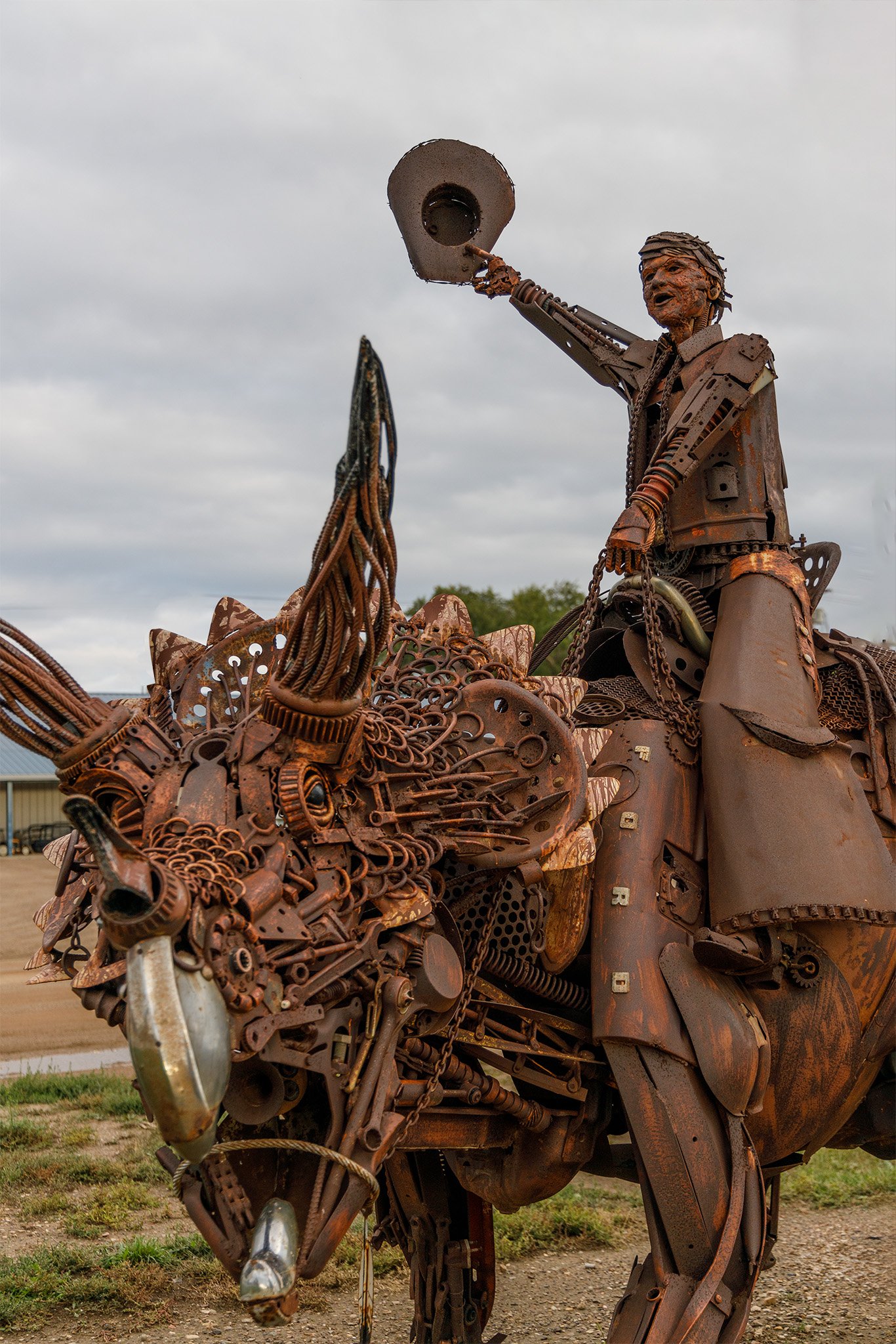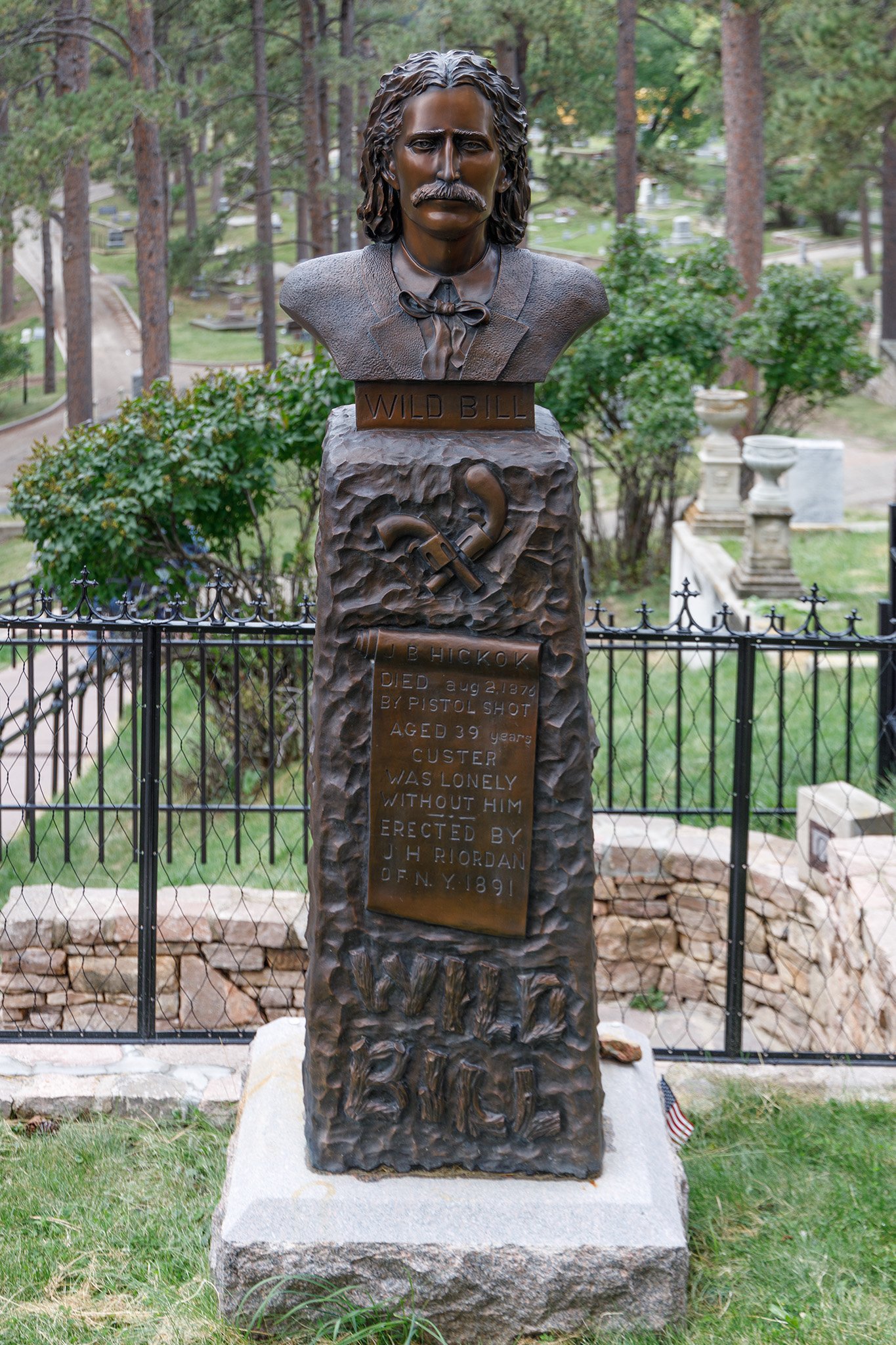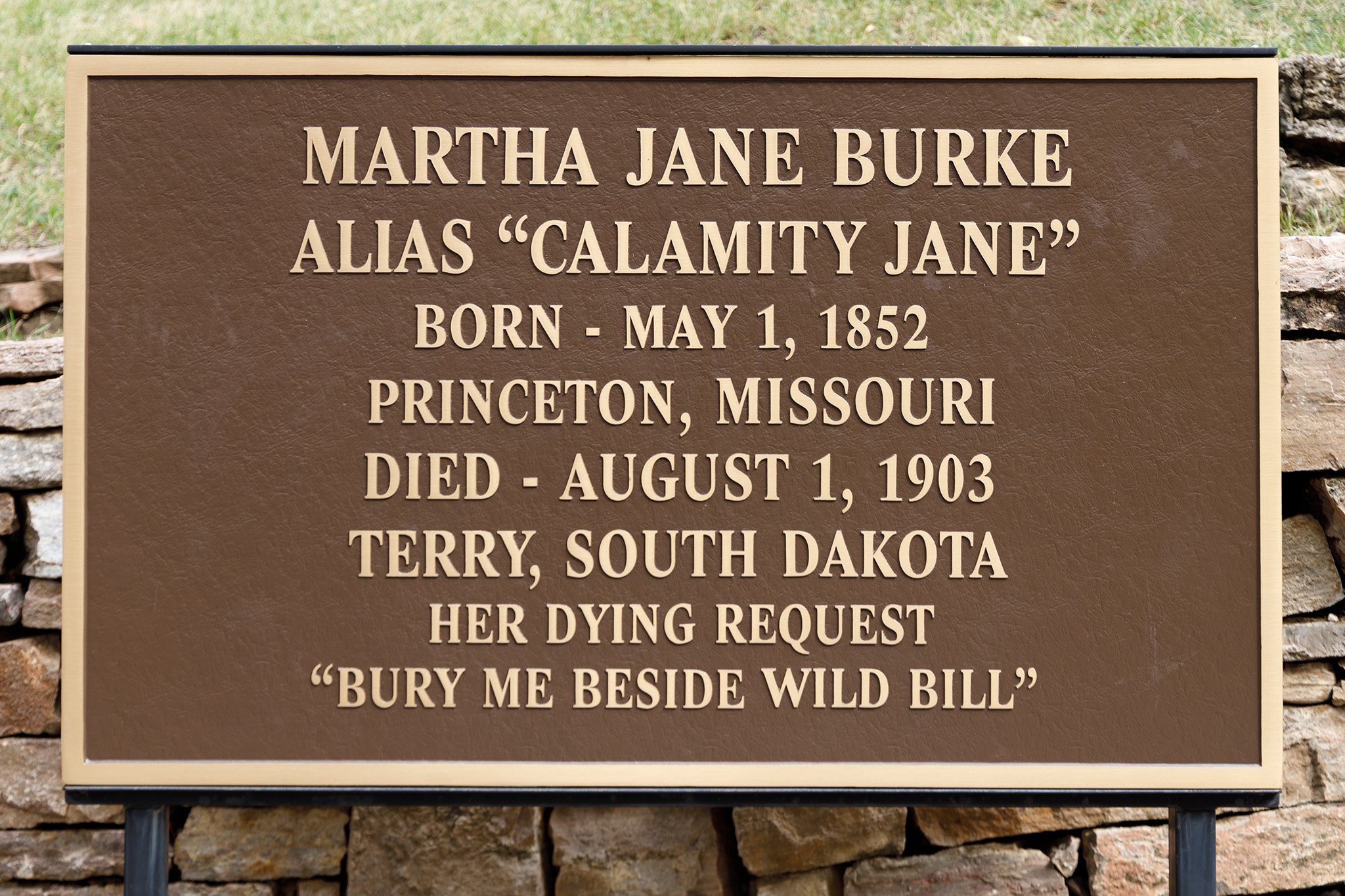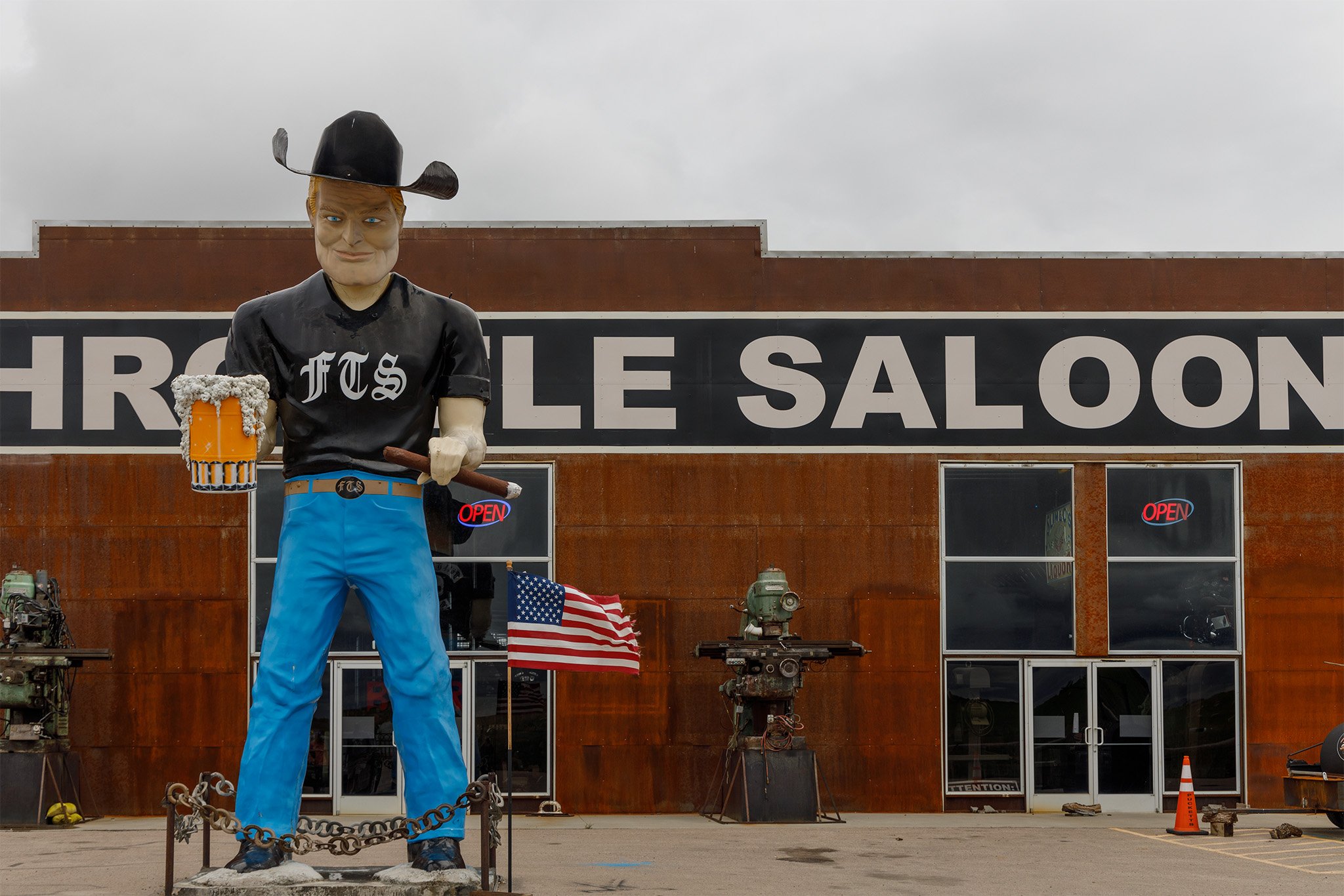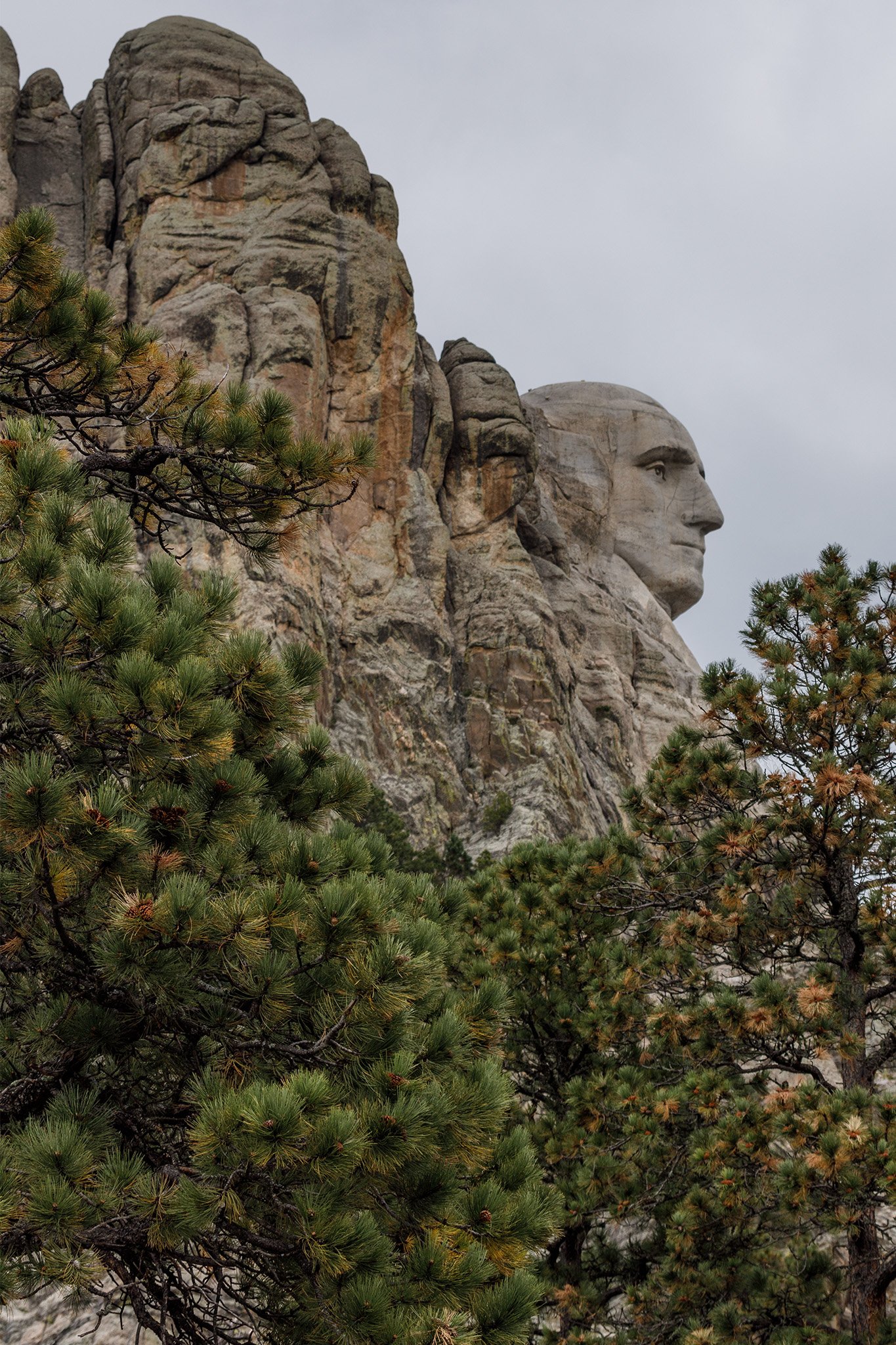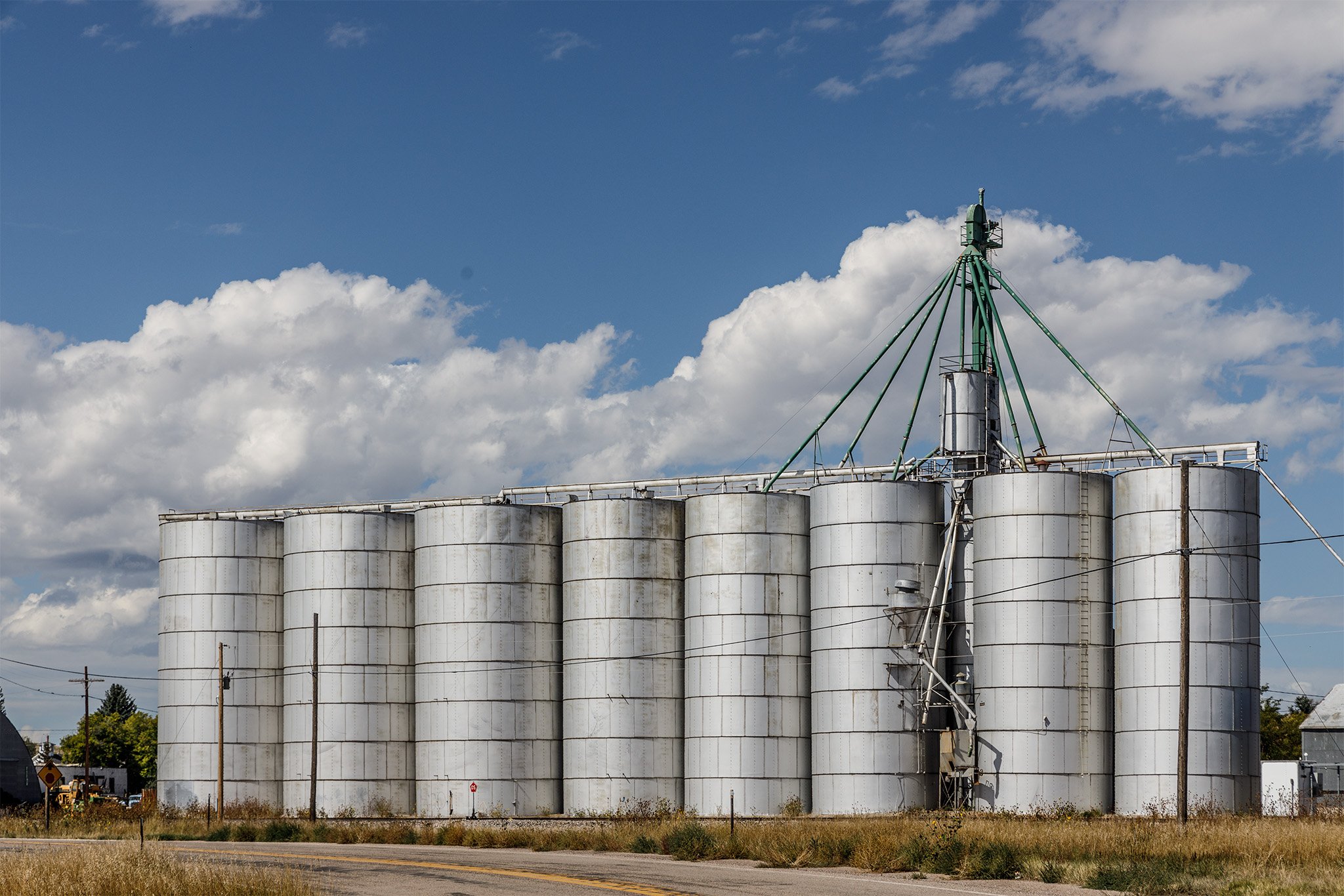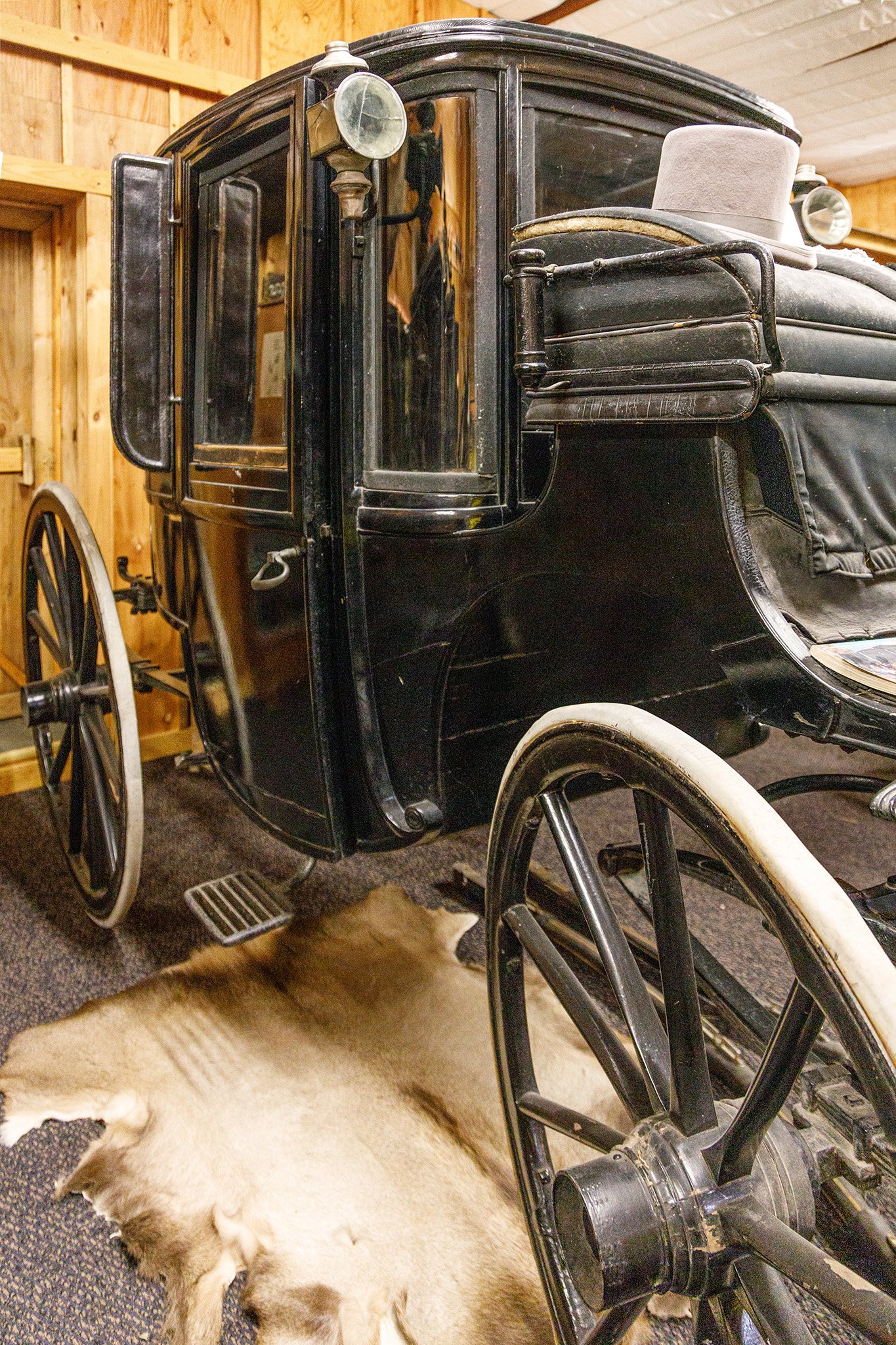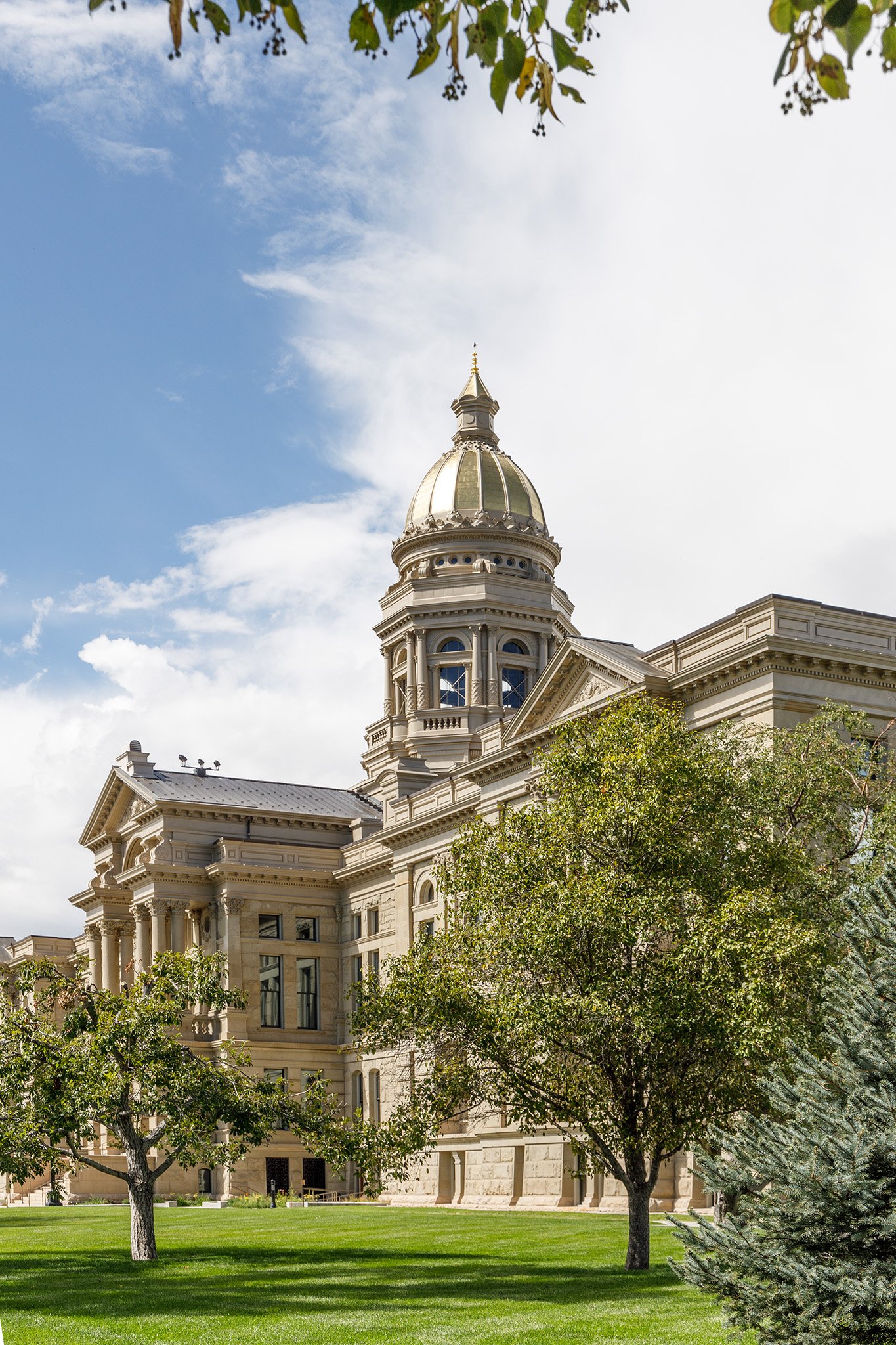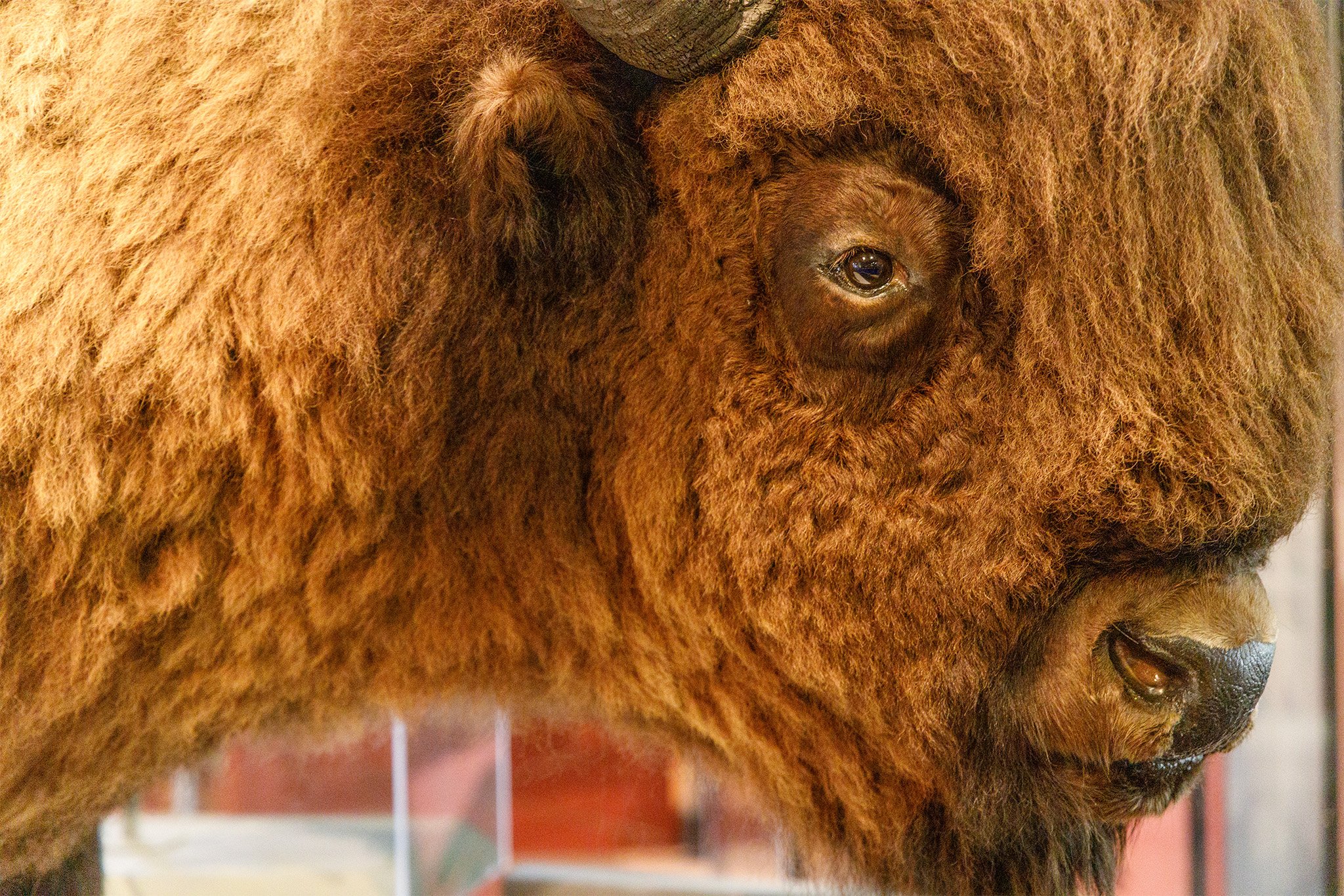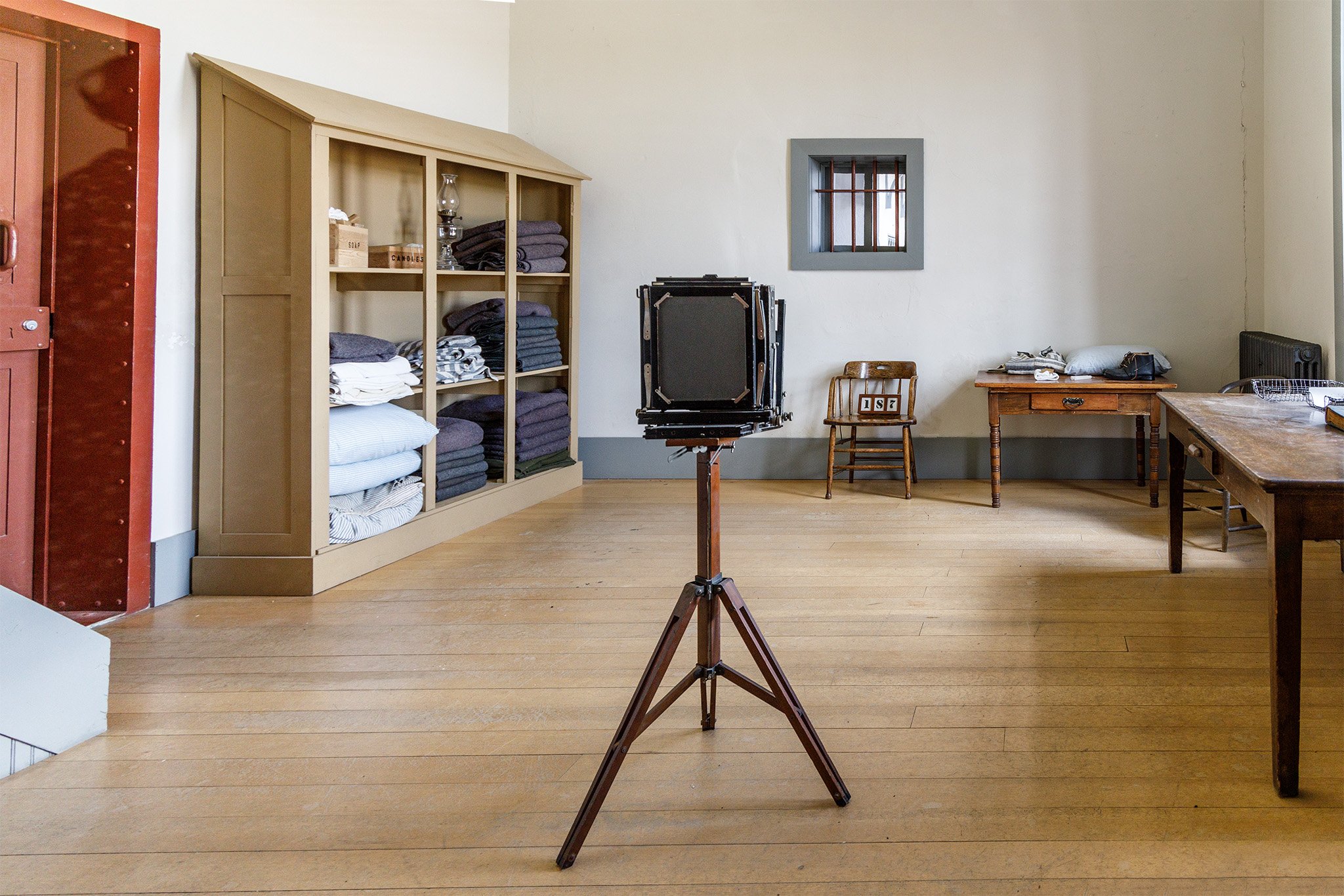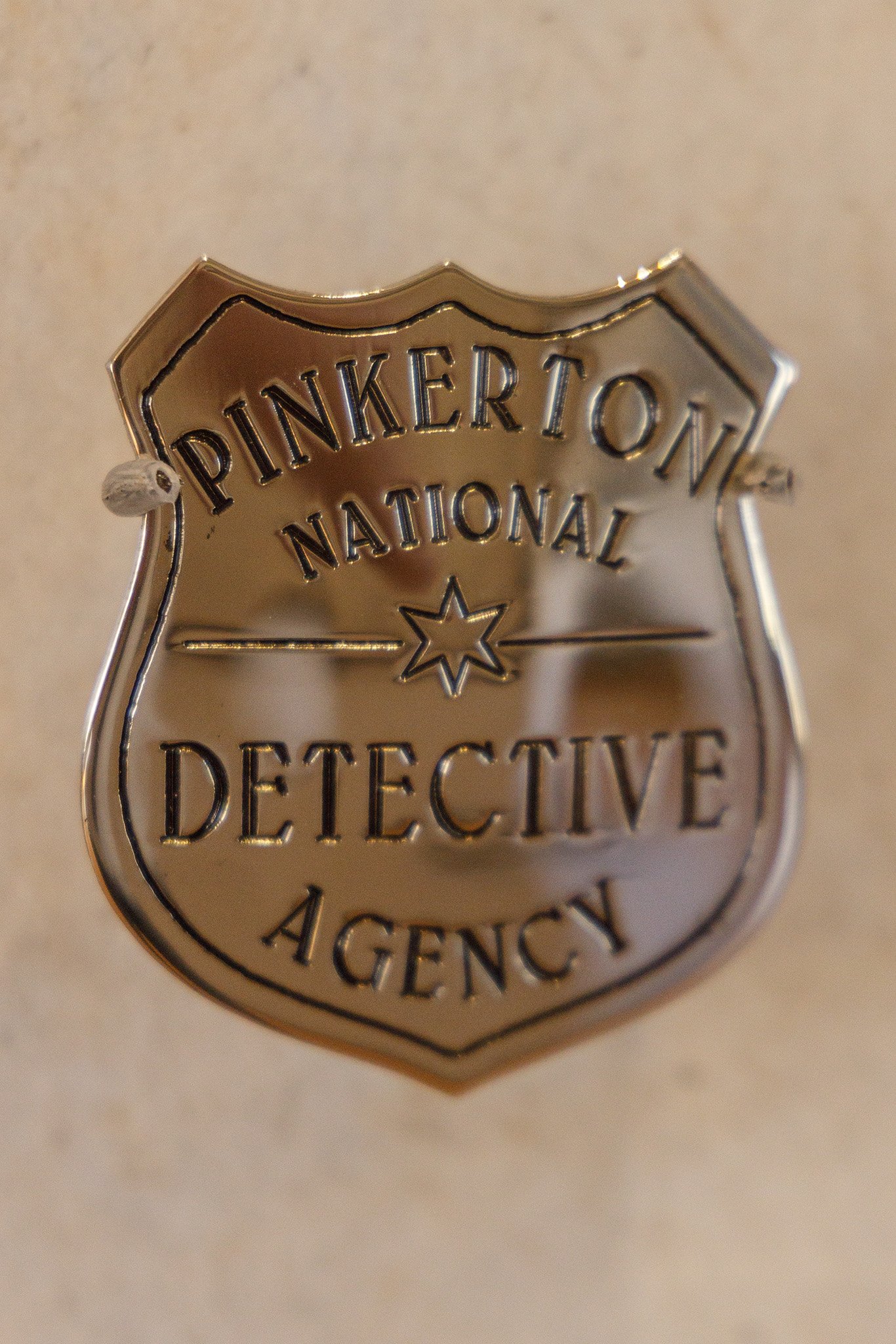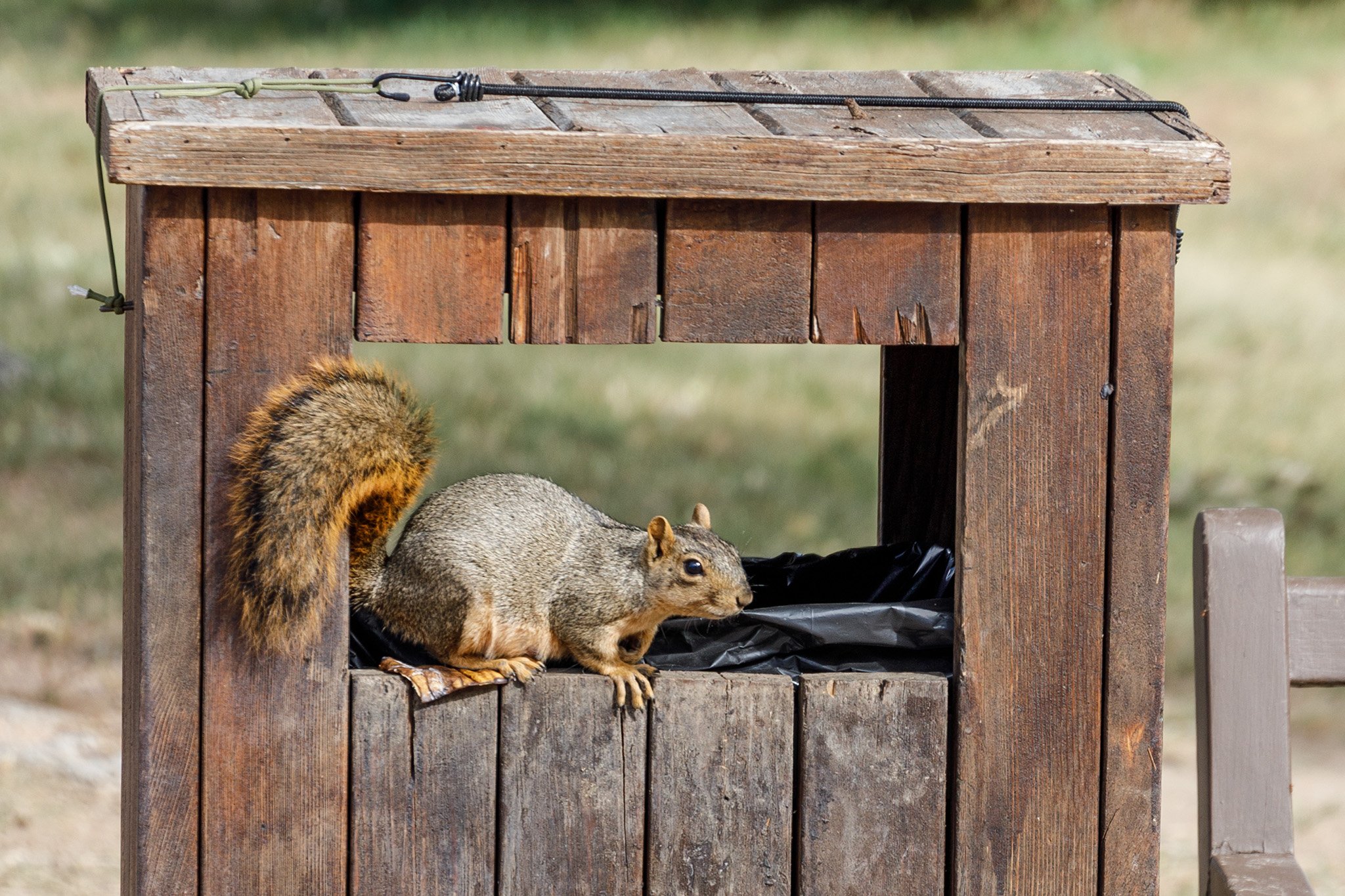Their dinosaur head is called Garth. (Grand a River Triceratops Horridus.)
There’s a sculpture of Hugh Glass who was played by Leonardo DiCaprio in The Revenant.
From Wikipedia on the mauling.
Glass and the rest of the Ashley Party eventually returned to Fort Kiowa to regroup for the trip west. Andrew Henry, Ashley's partner, had joined the group, and he along with Glass and several others set out overland to the Yellowstone River. Near the forks of the Grand River, near present-day Shadehill Reservoir, Perkins County, South Dakota, while scouting for game for the expedition larder, Glass surprised and disturbed a mother grizzly bear with two cubs. The bear charged, picked him up, bit, slashed and lacerated his flesh, severely wounded him, and forced him to the ground. Hearing Glass’ screams for help, several of the party made their way to Glass and killed the bear. In words attributed to another trapper, Hiram Allen, who was at the scene: "the monster had torn the flesh from the lower part of the body, and from the lower limbs. He also had his neck shockingly torn, even to the degree that an aperture appeared to have been made into the windpipe, and his breath to exude at the side of is neck. Blood flowed freely, but fortunately no bone was broken, and his hands and arms were not disabled." The men were convinced Glass would not survive his injuries; nevertheless, they carried Glass on a litter for two days, but doing so greatly slowed the pace of the group's travel.
Henry asked for two volunteers to stay with Glass until he died and then bury him. John S. Fitzgerald and a man later identified as "Bridges" stepped forward, and as the rest of the party moved on, began digging his grave. Later, claiming that they were interrupted by attacking Arikara, the pair grabbed the rifle, knife, and other equipment belonging to Glass and took flight. Fitzgerald and "Bridges" later caught up with the party and incorrectly reported to Ashley that Glass had died. There is a debate whether Bridges was actually famed mountain man Jim Bridger.
Despite his injuries, Glass regained consciousness, but found himself abandoned without weapons or equipment. He had festering wounds, a broken leg, and deep cuts on his back that exposed his bare ribs. Glass lay mutilated and alone, more than 200 miles (320 km) from the nearest American settlement at Fort Kiowa, on the Missouri River. Glass set the bone of his own leg, wrapped himself in the bear hide his companions had placed over him as a shroud, and began crawling back to Fort Kiowa. To prevent gangrene, Glass allowed maggots to eat the dead infected flesh in his wounds.
Using Thunder Butte as a navigational landmark, Glass crawled overland south toward the Cheyenne River where he fashioned a crude raft and floated downstream to Fort Kiowa. The journey took him six weeks. He survived mostly on wild berries and roots.





